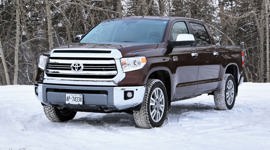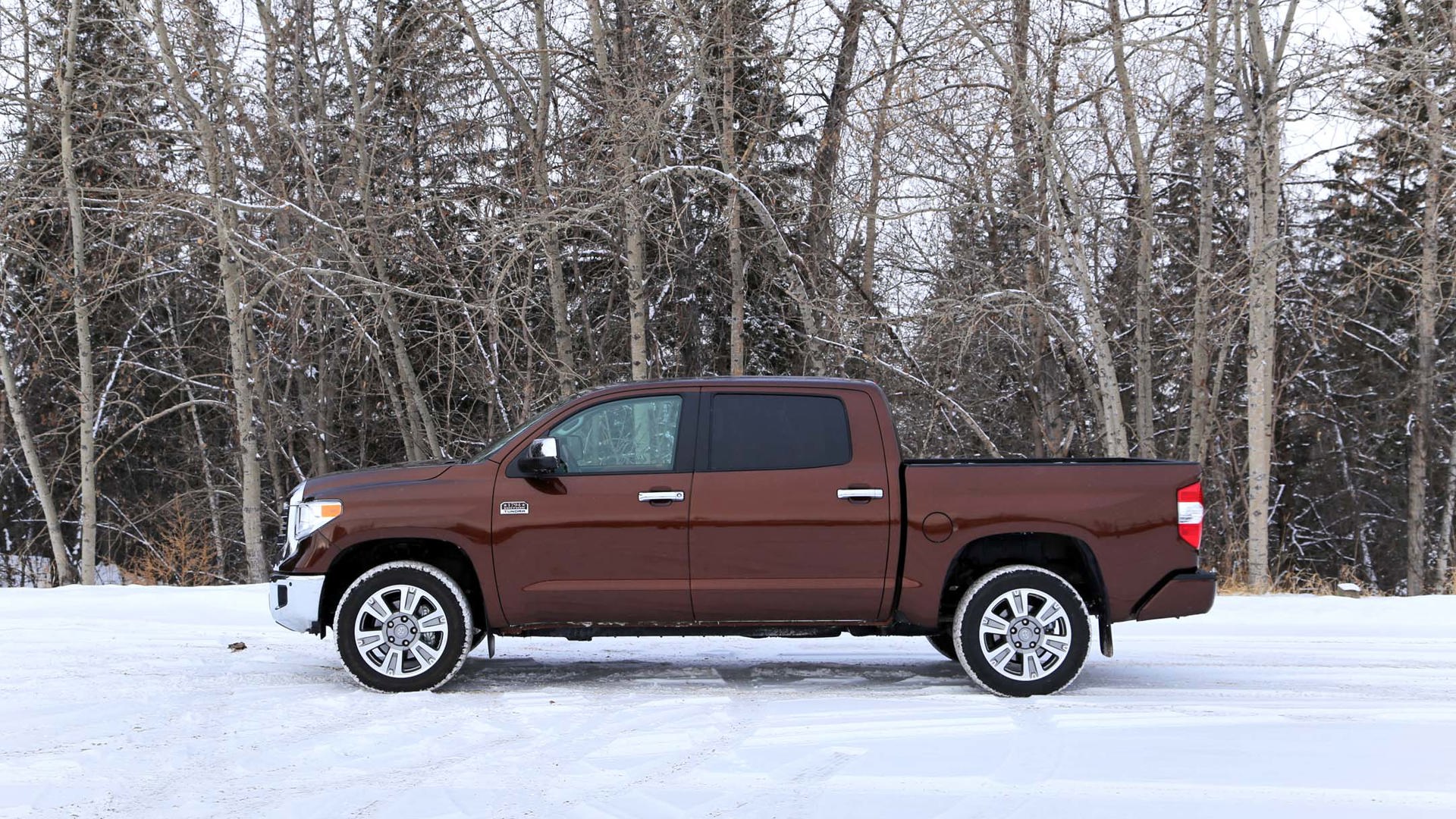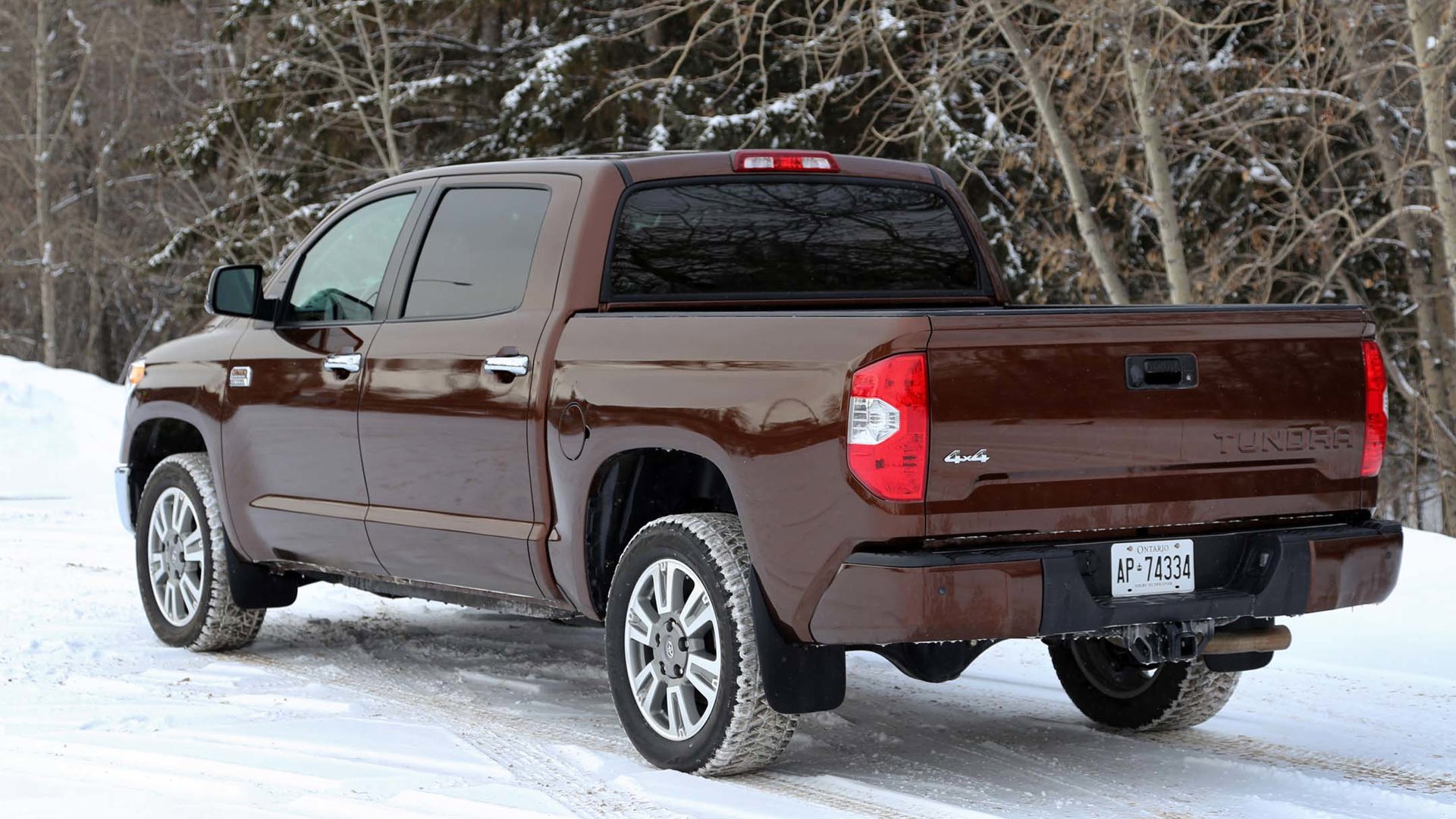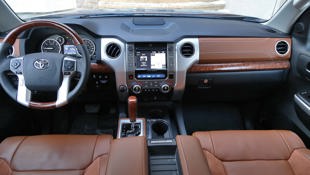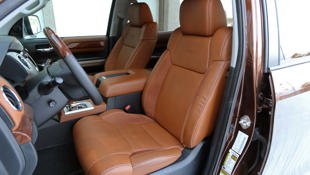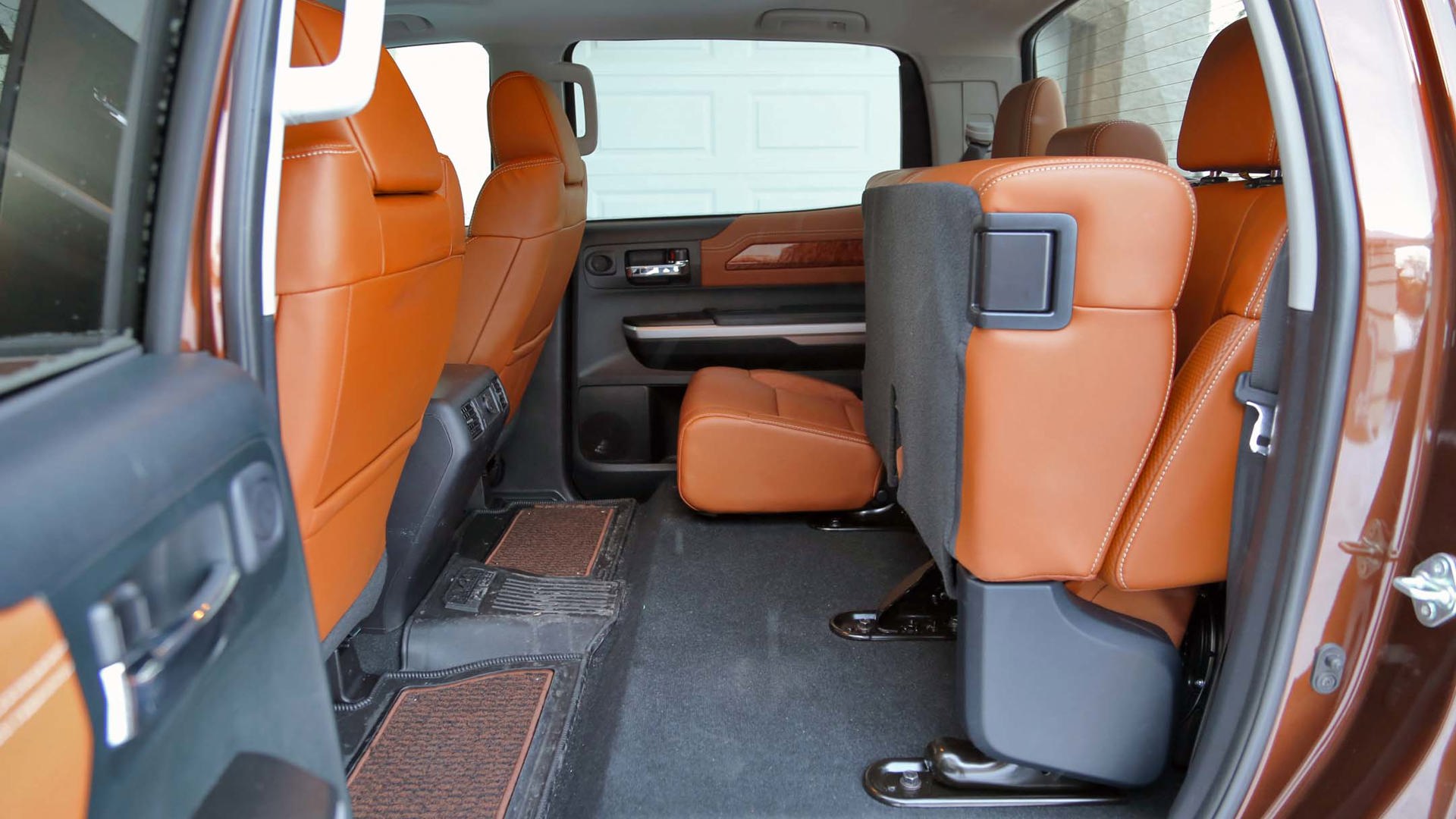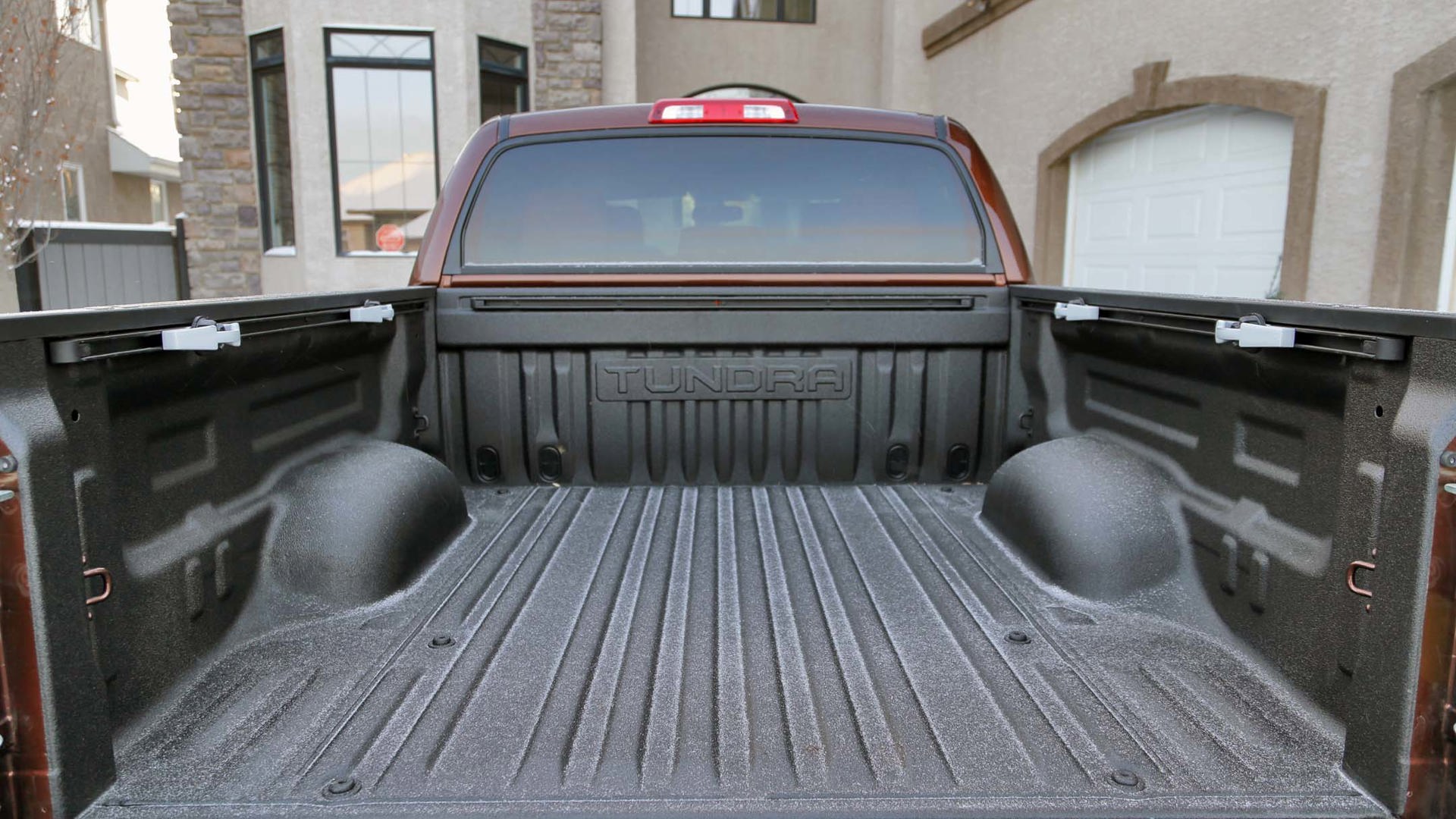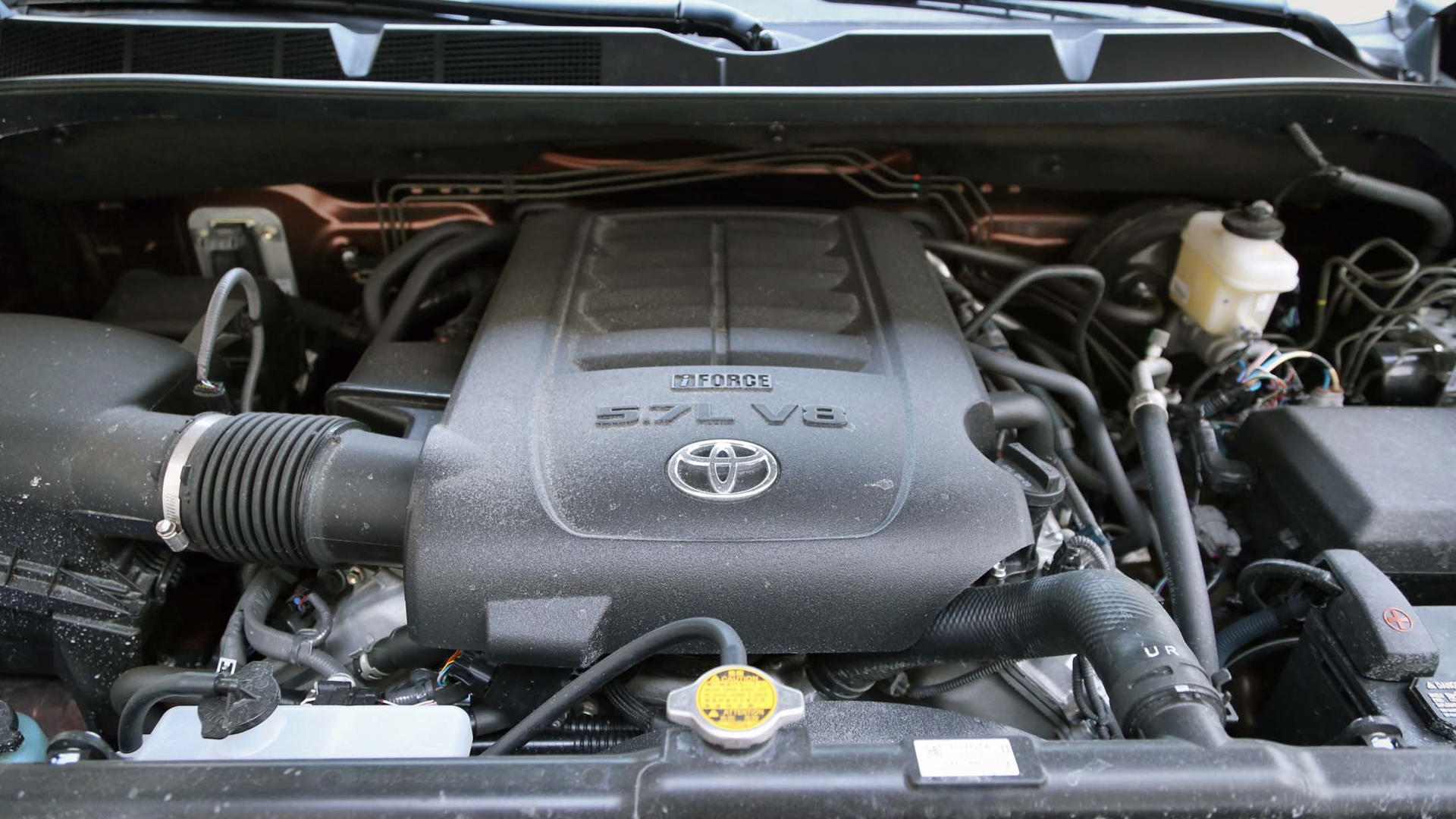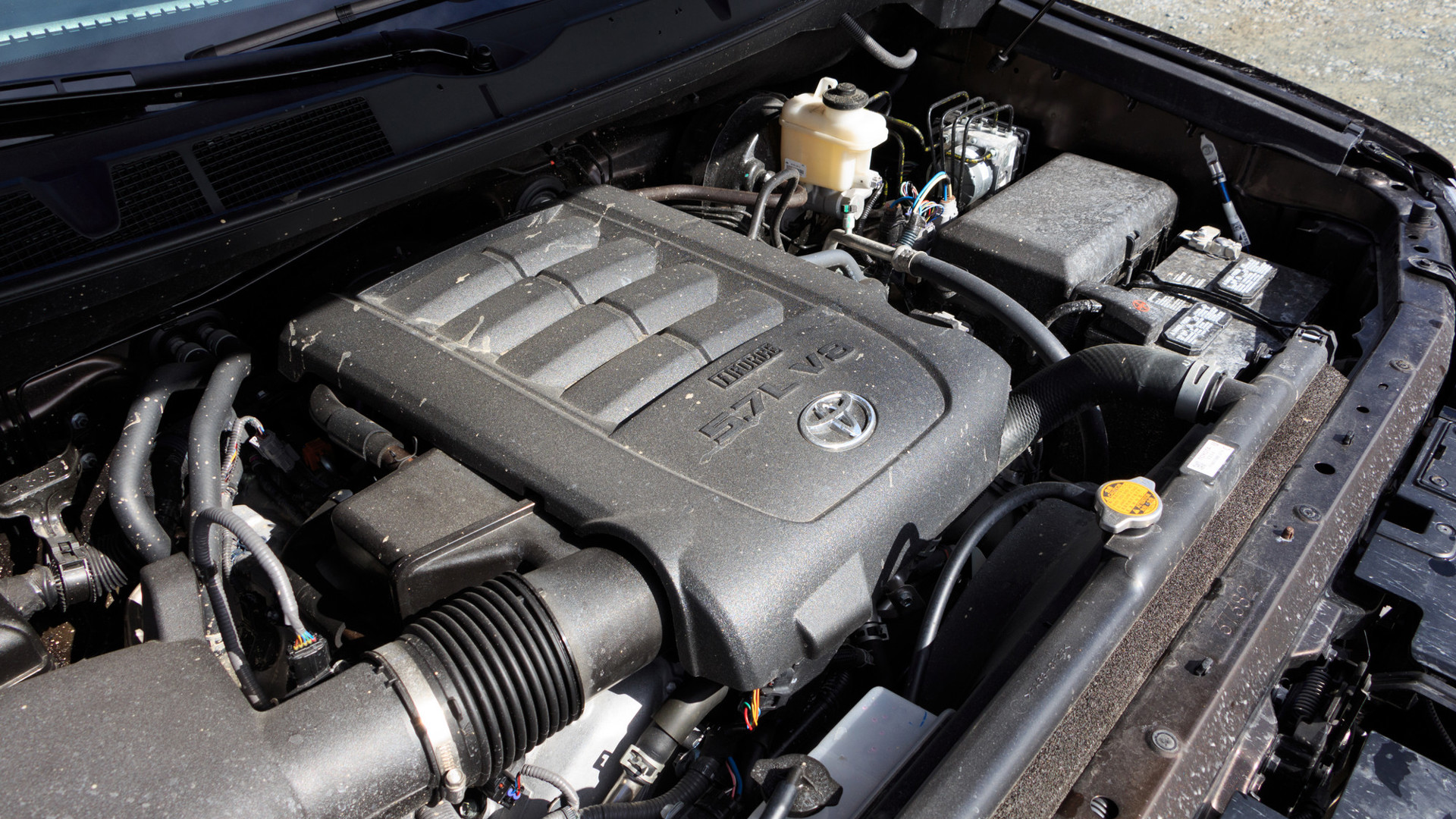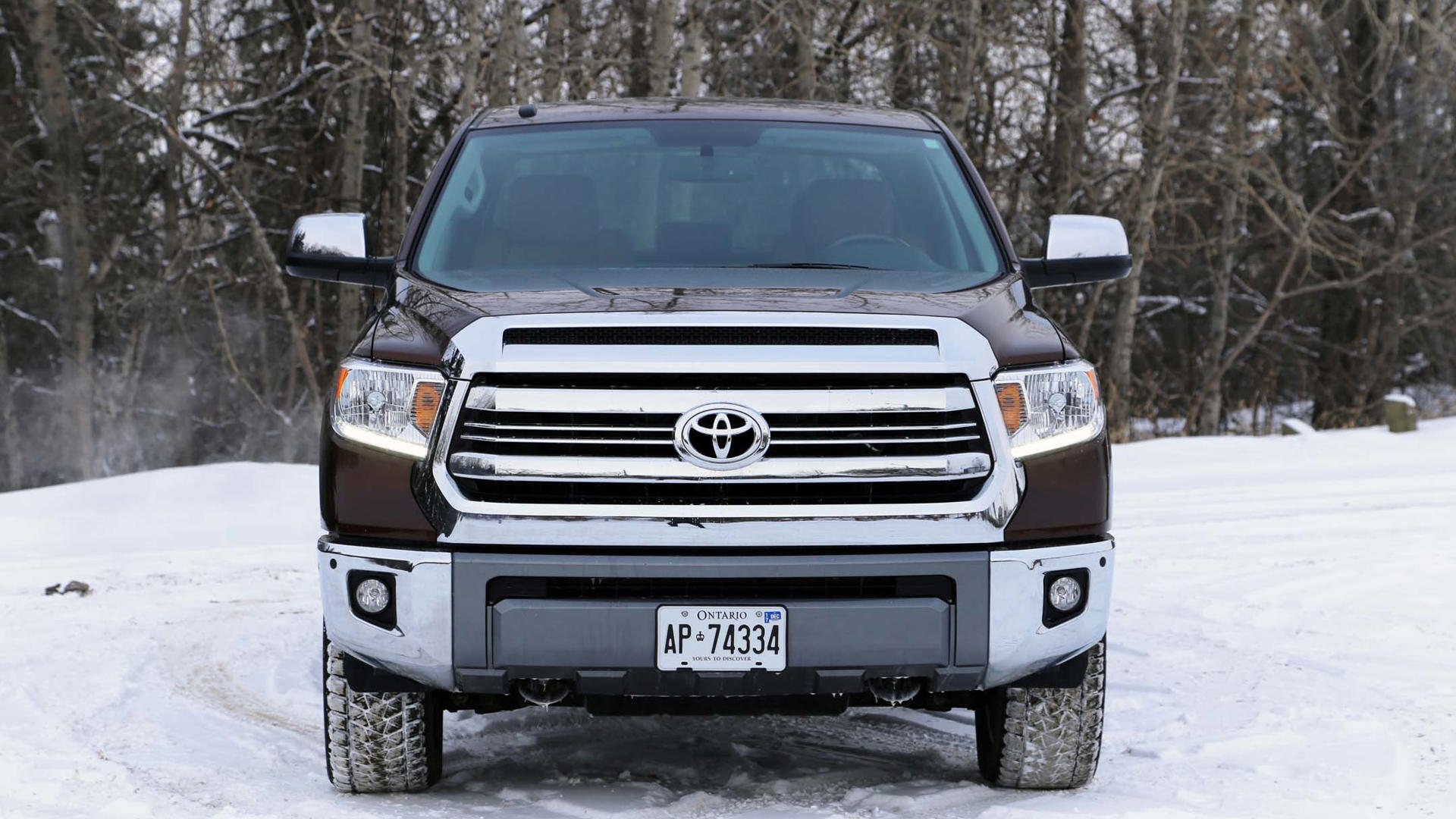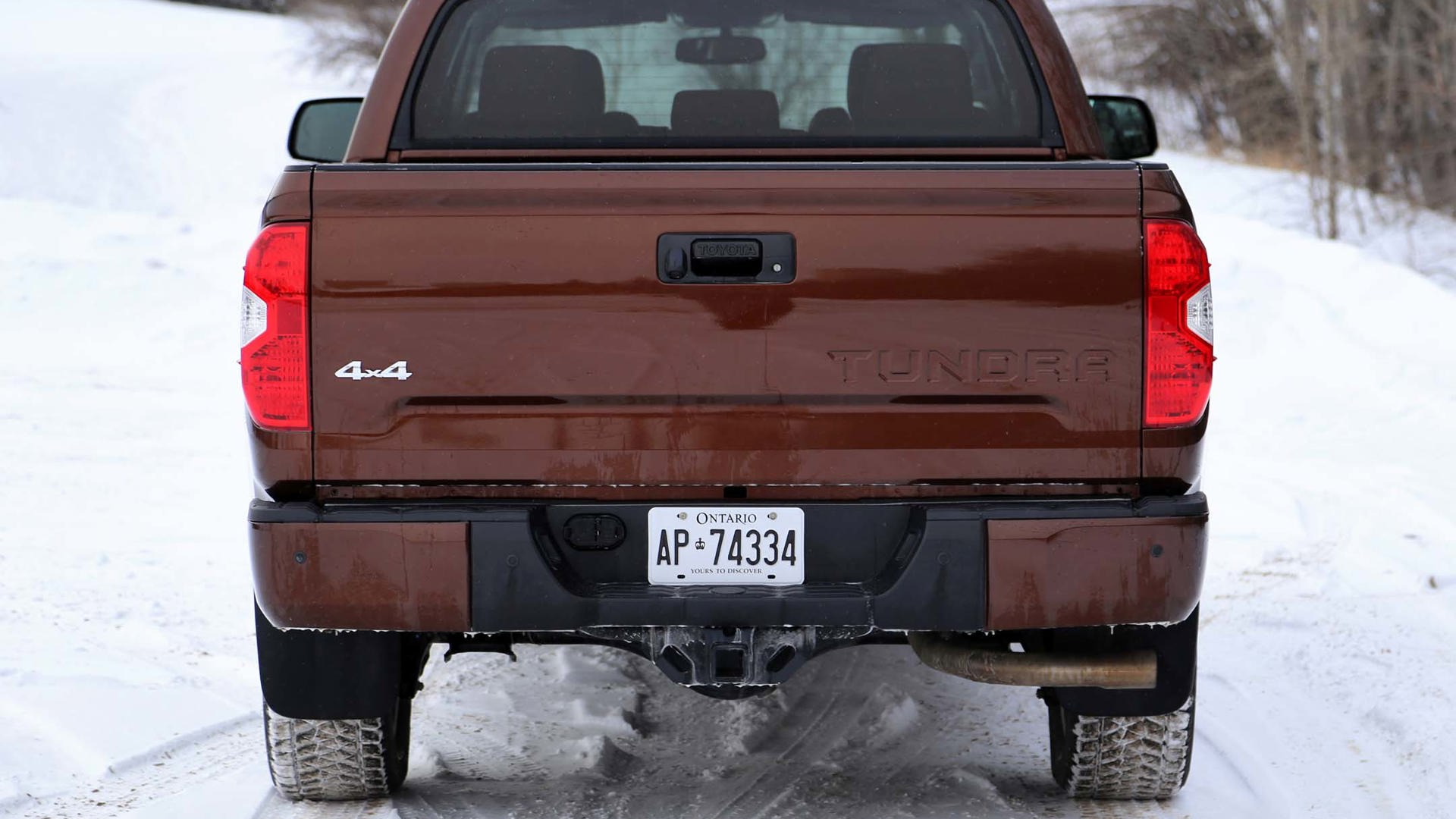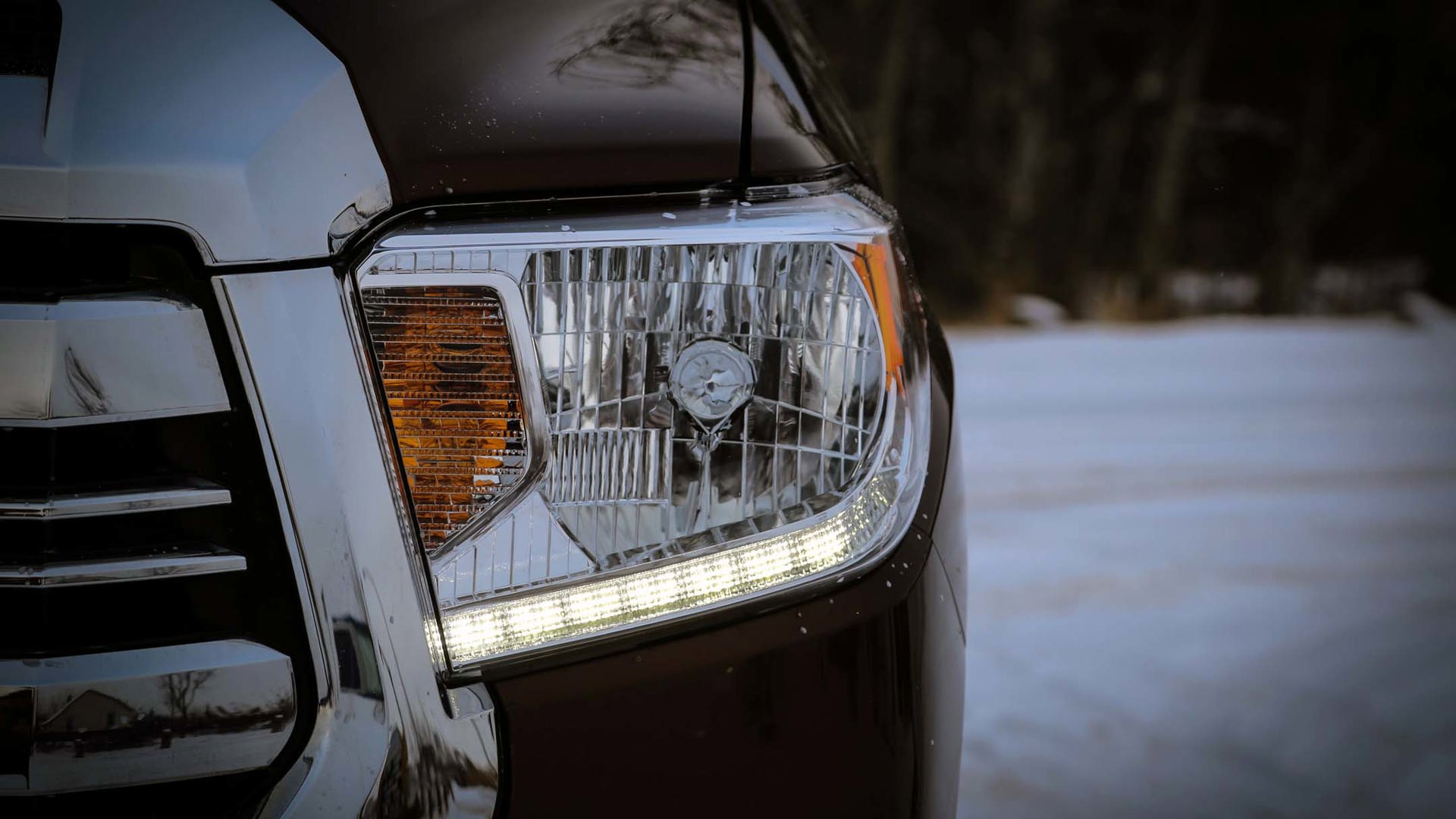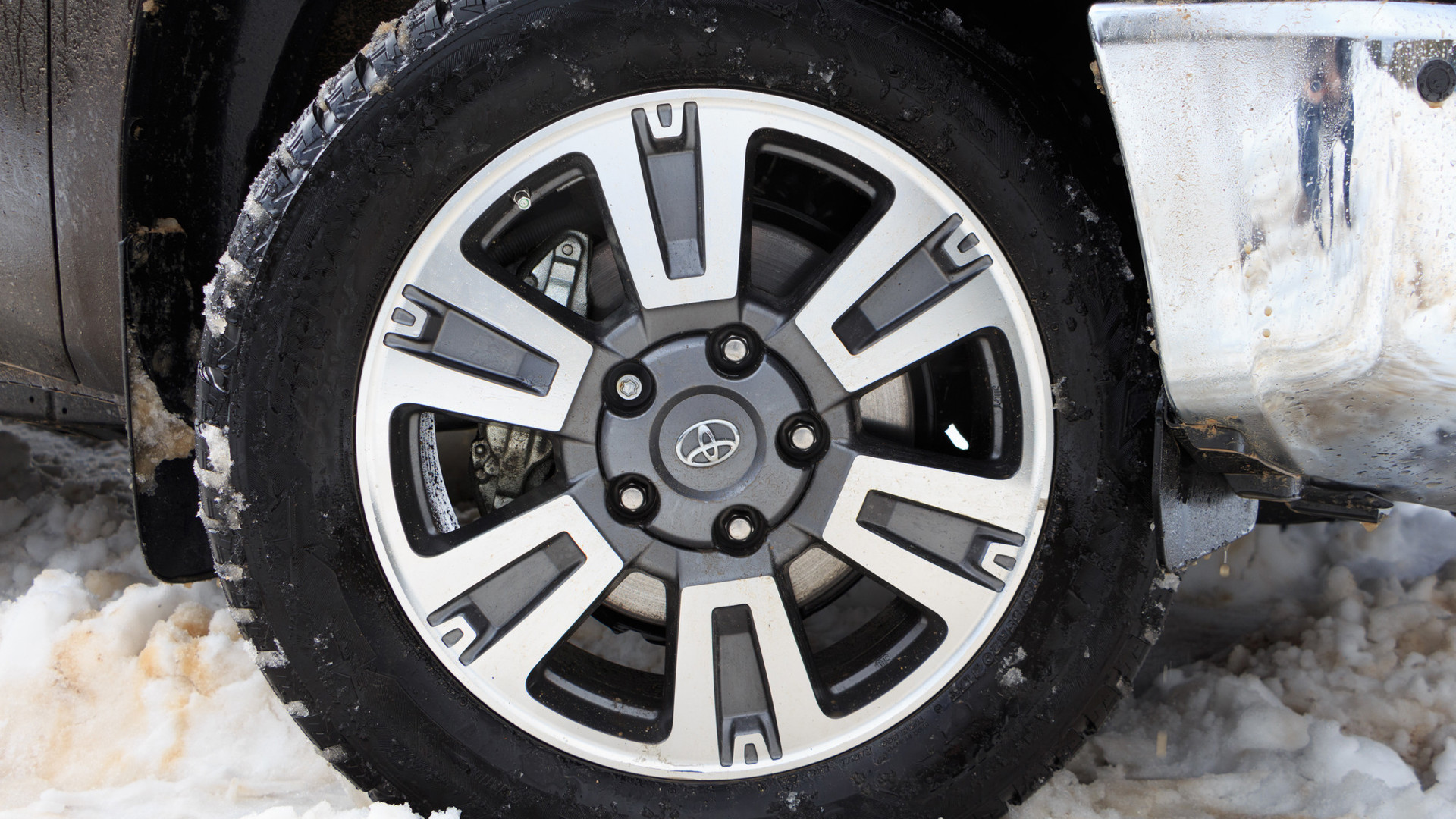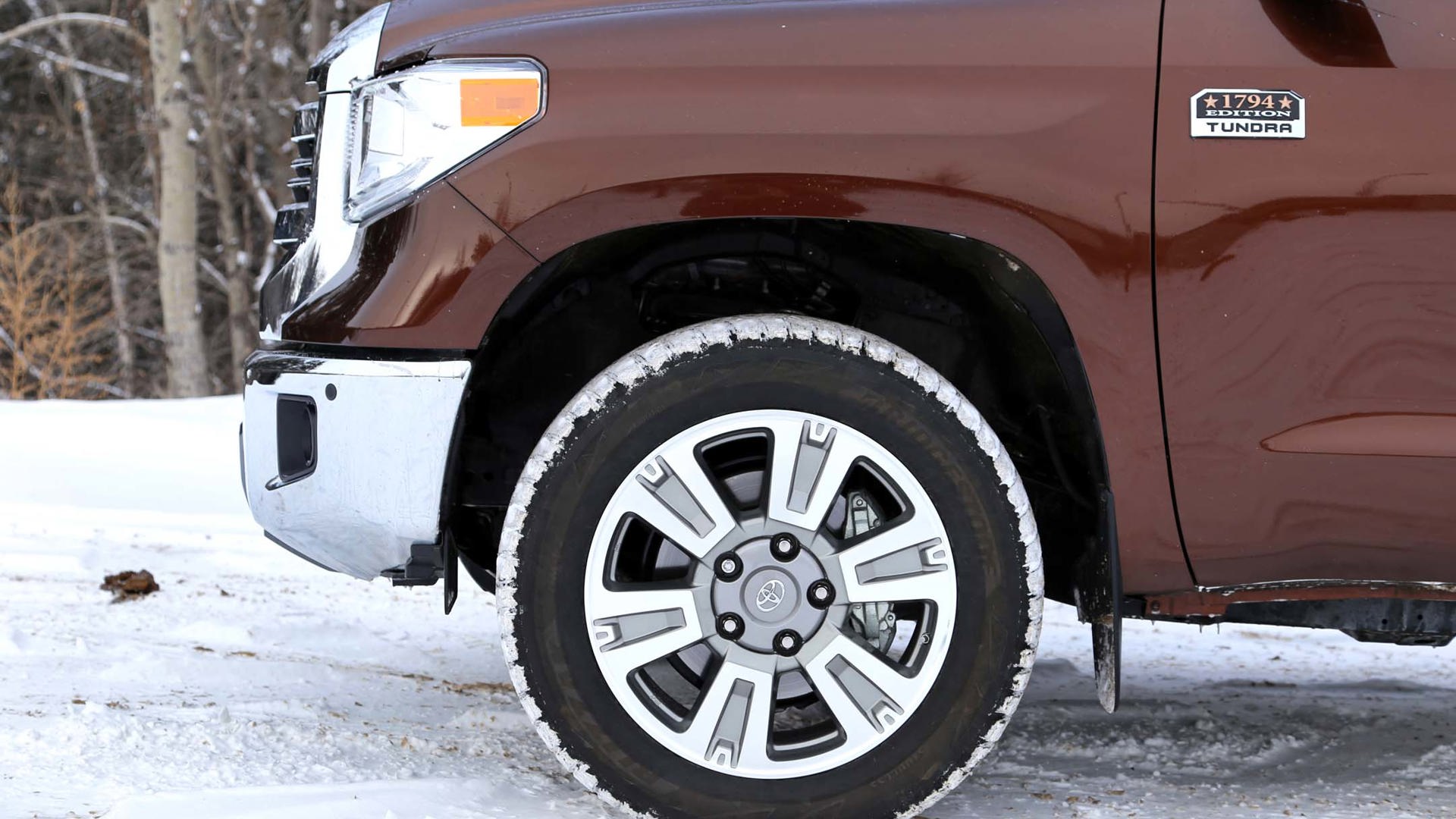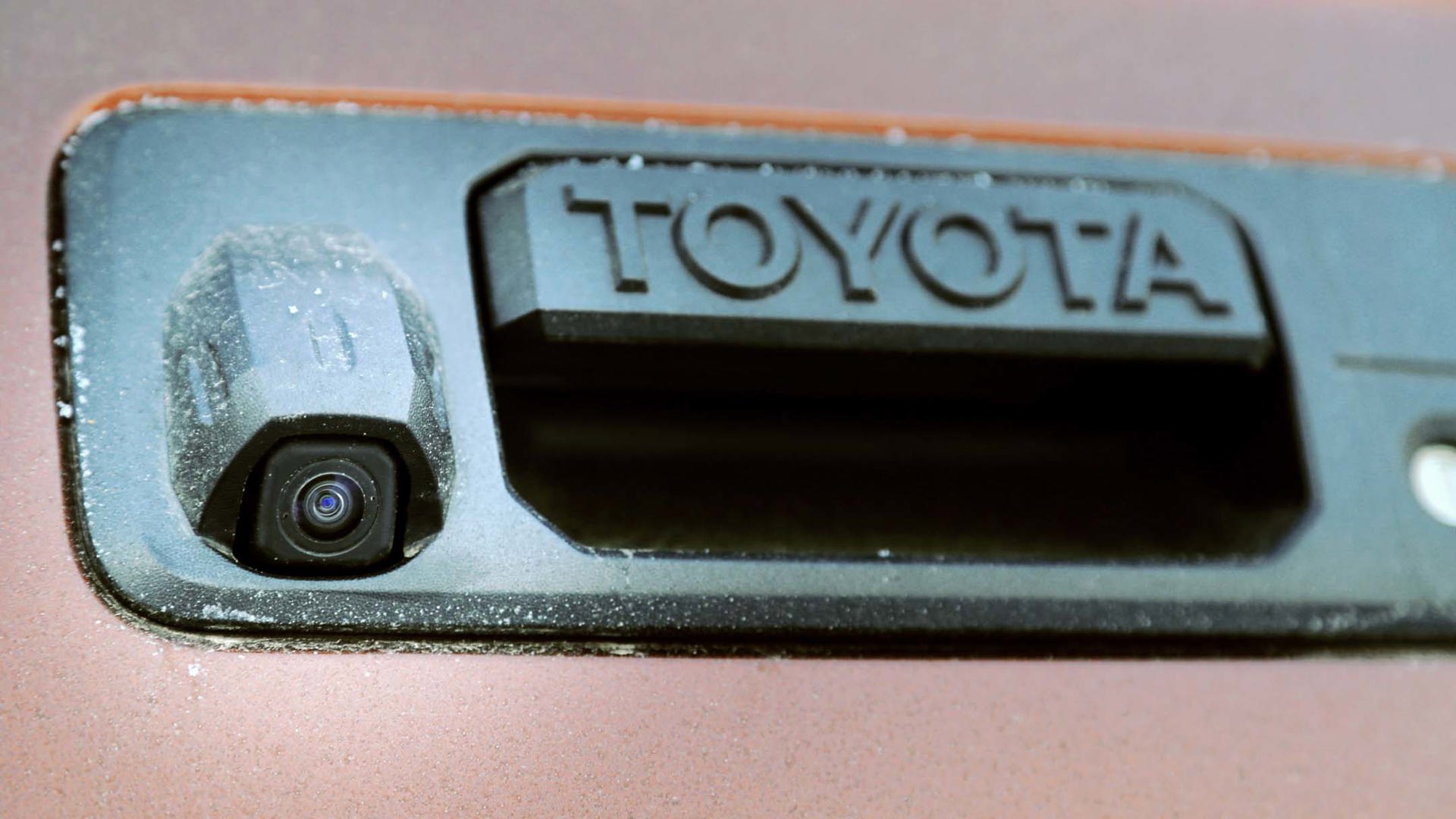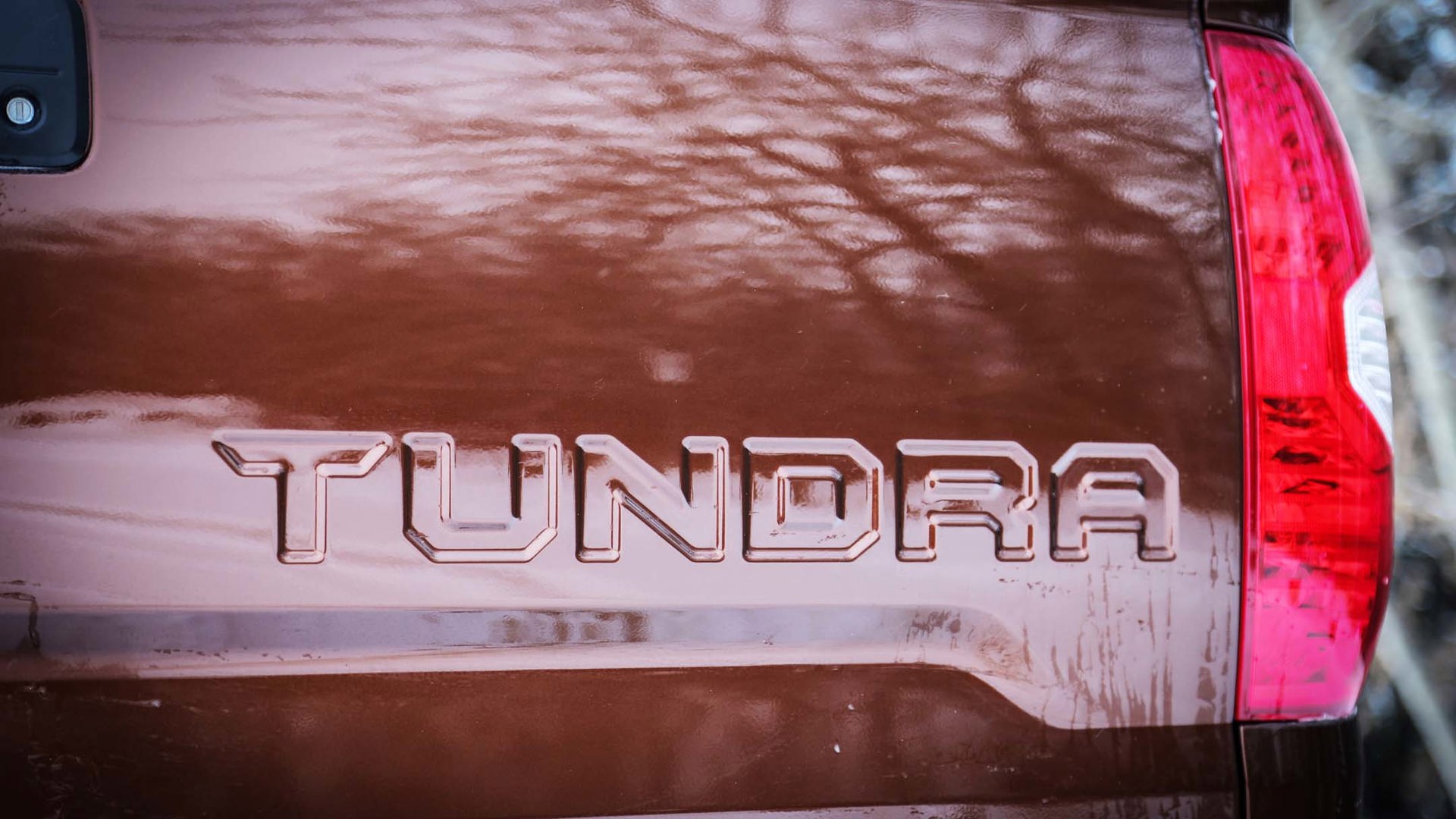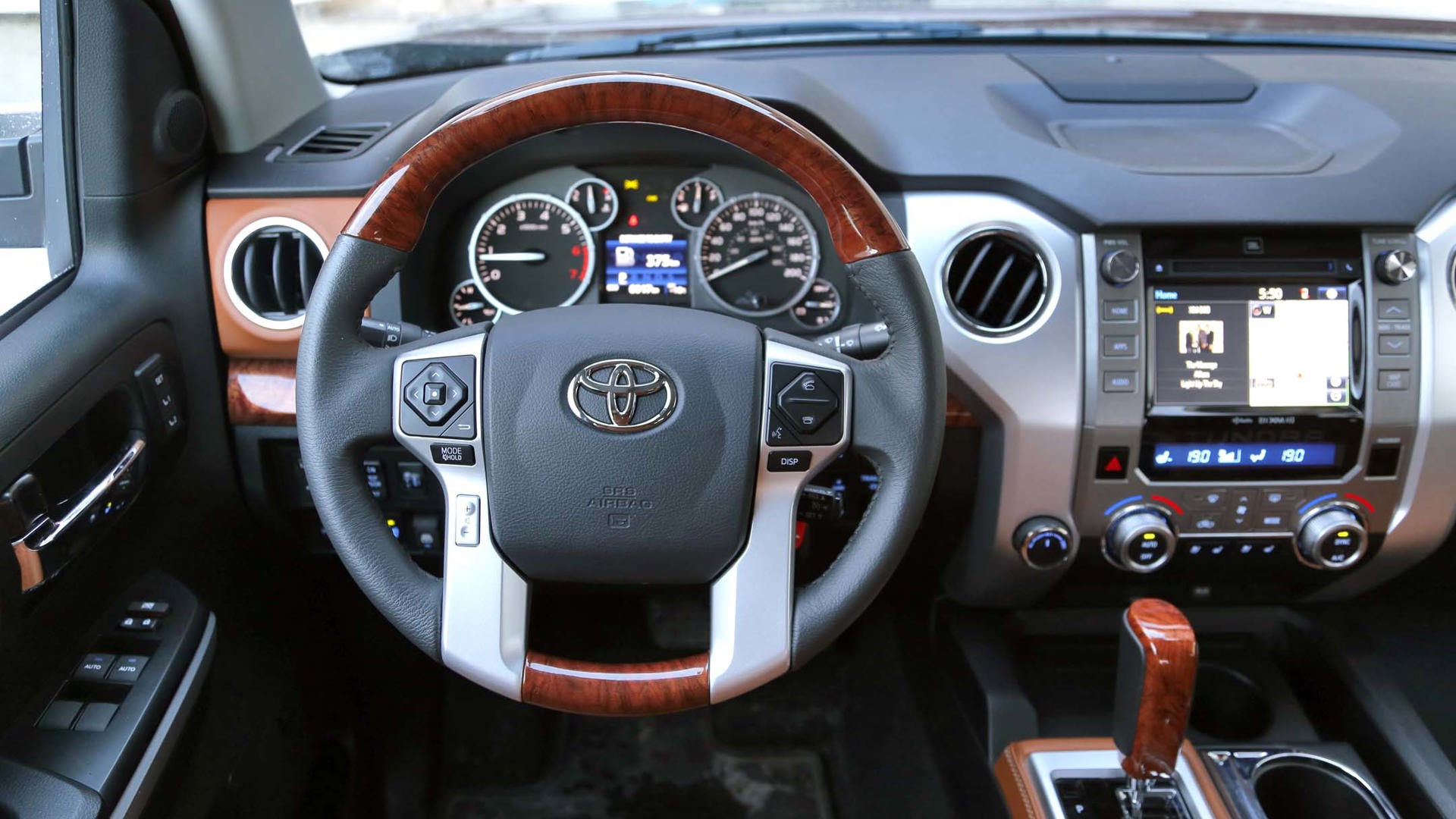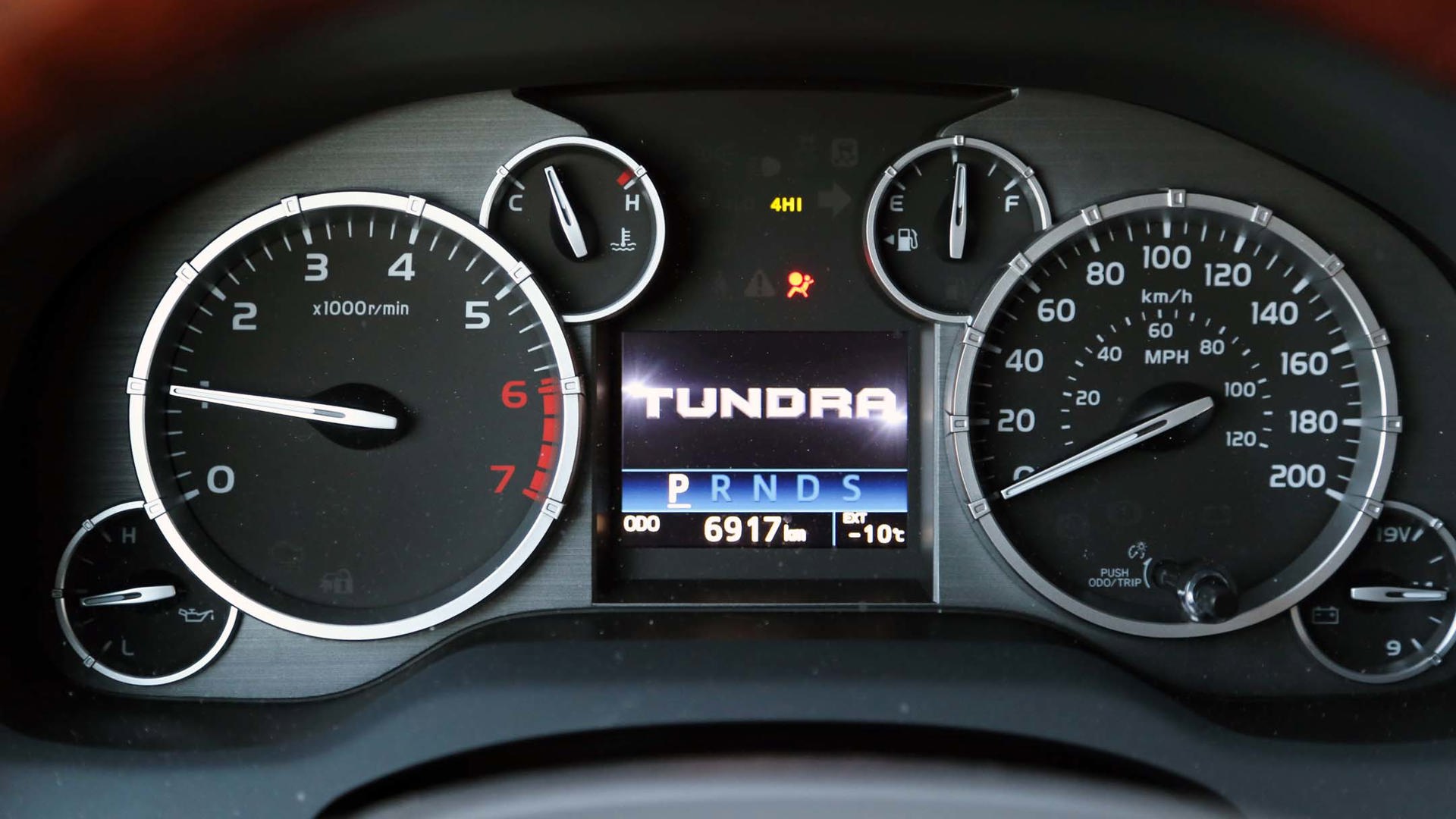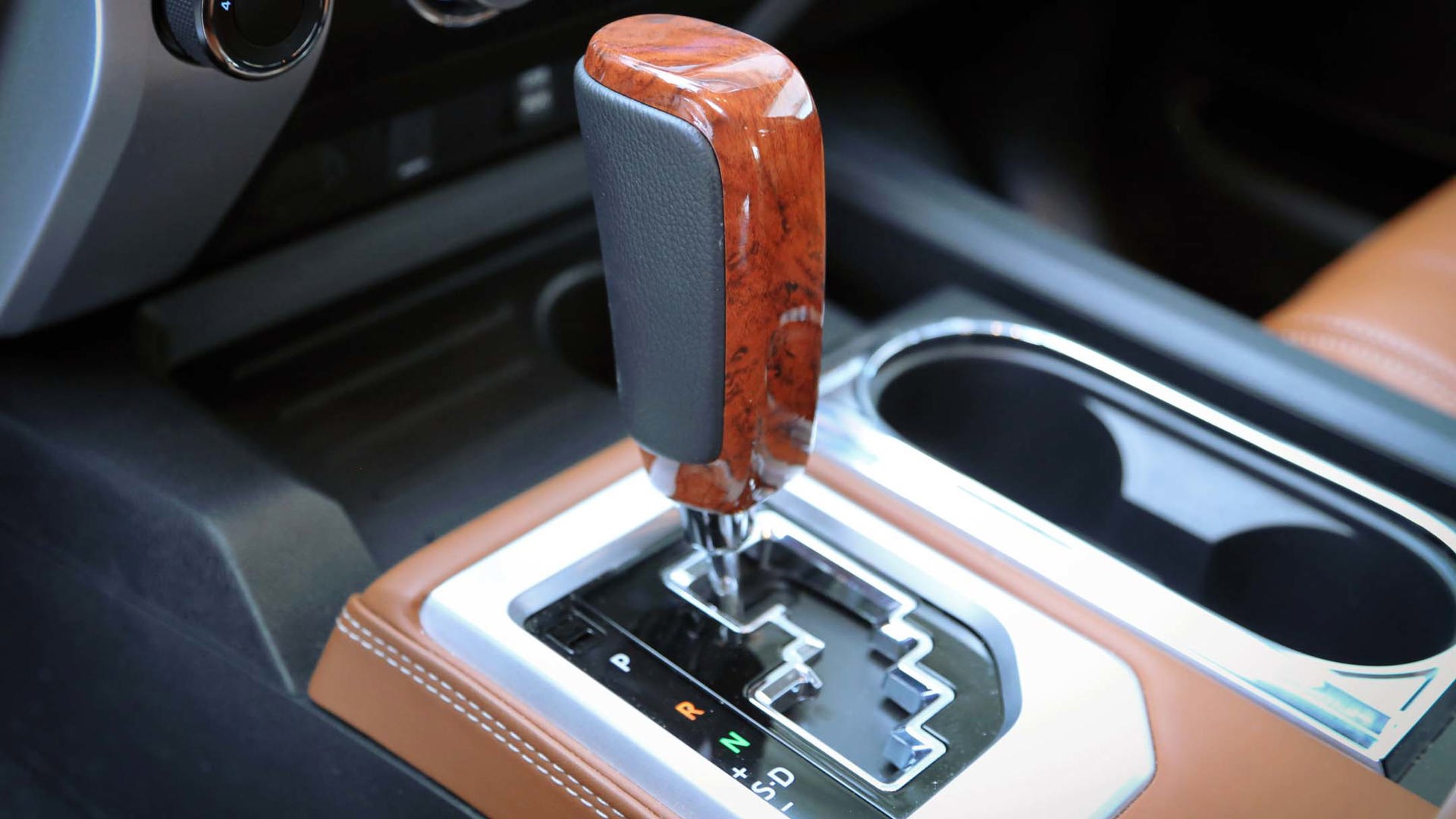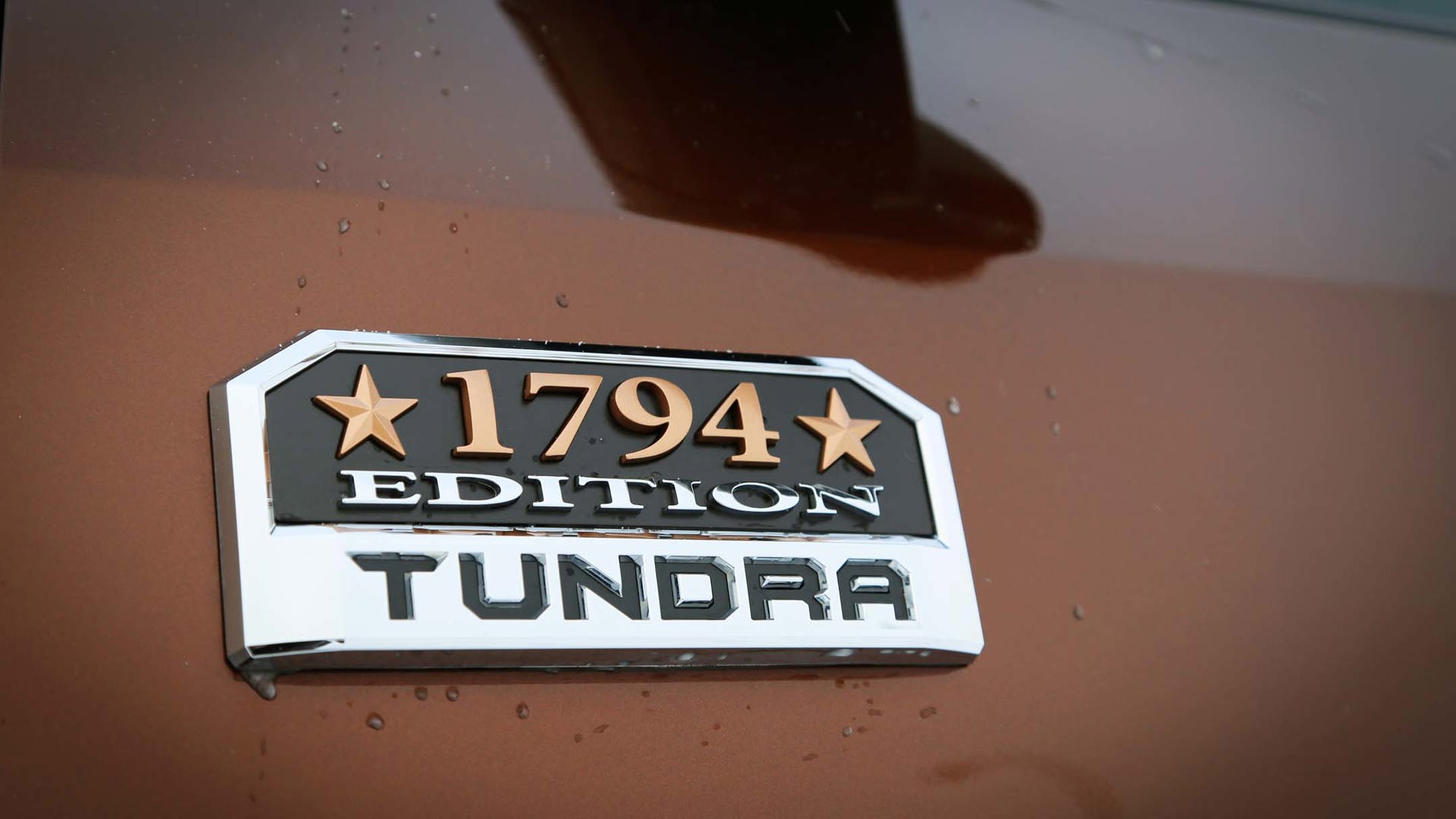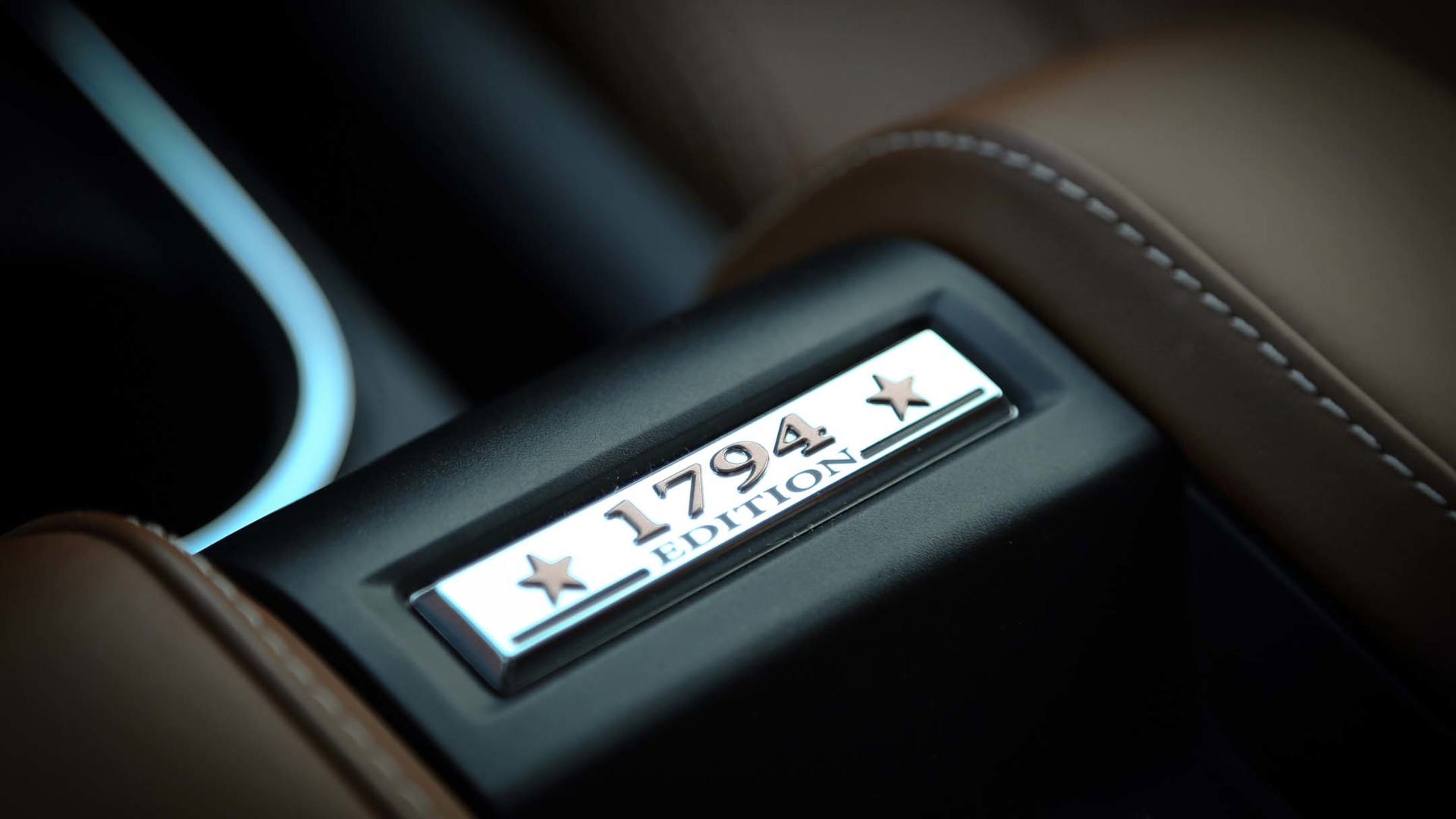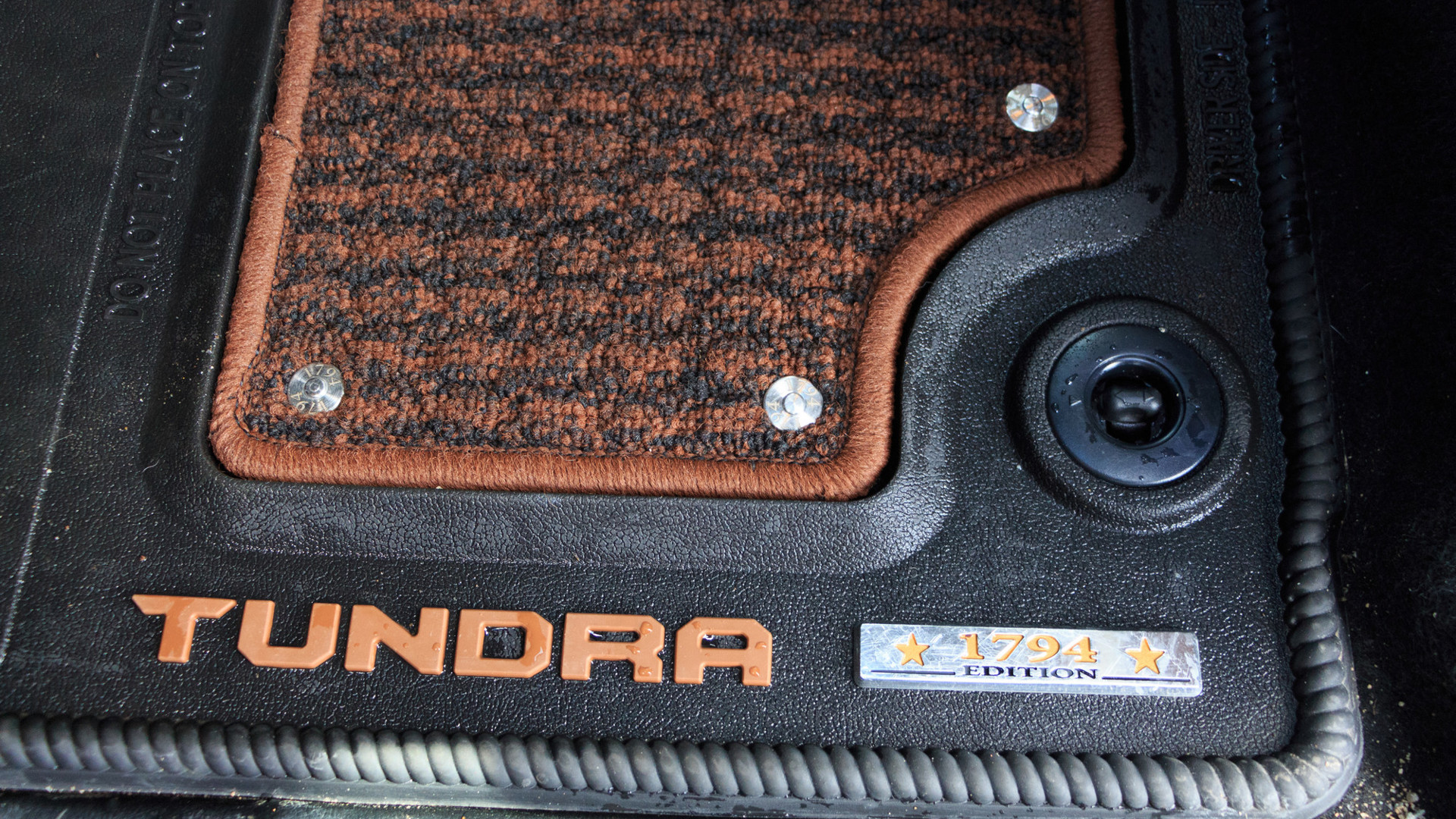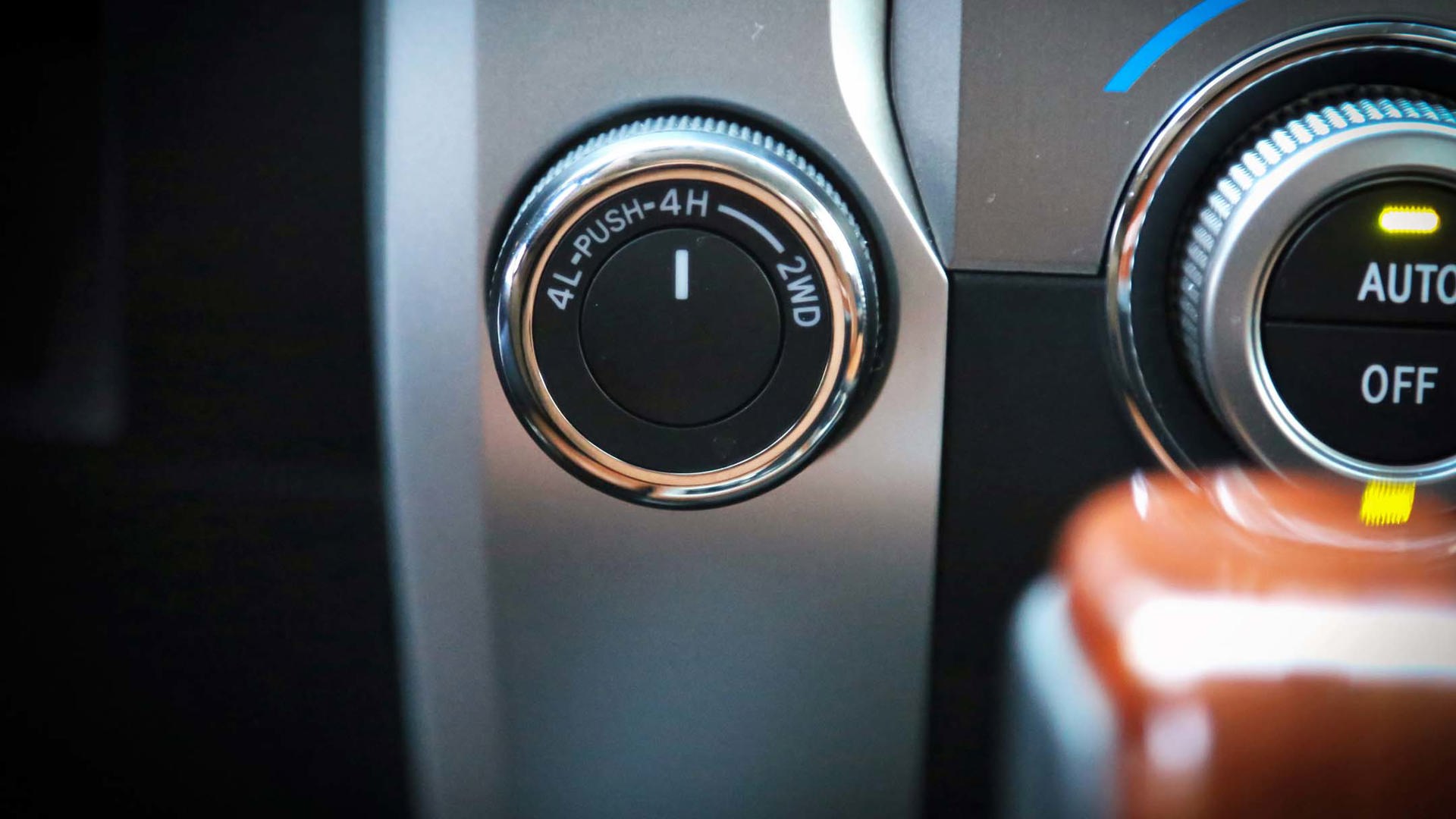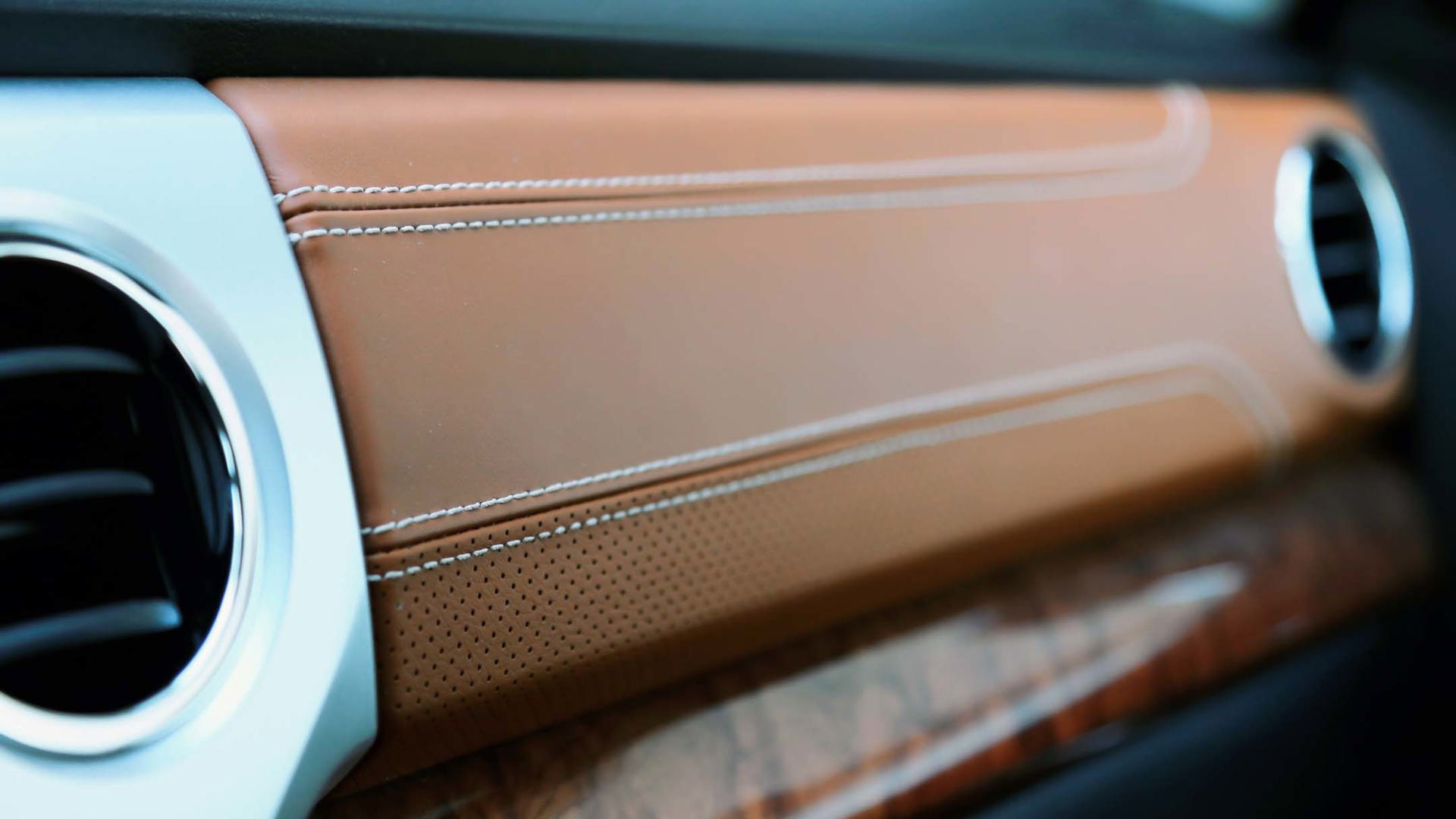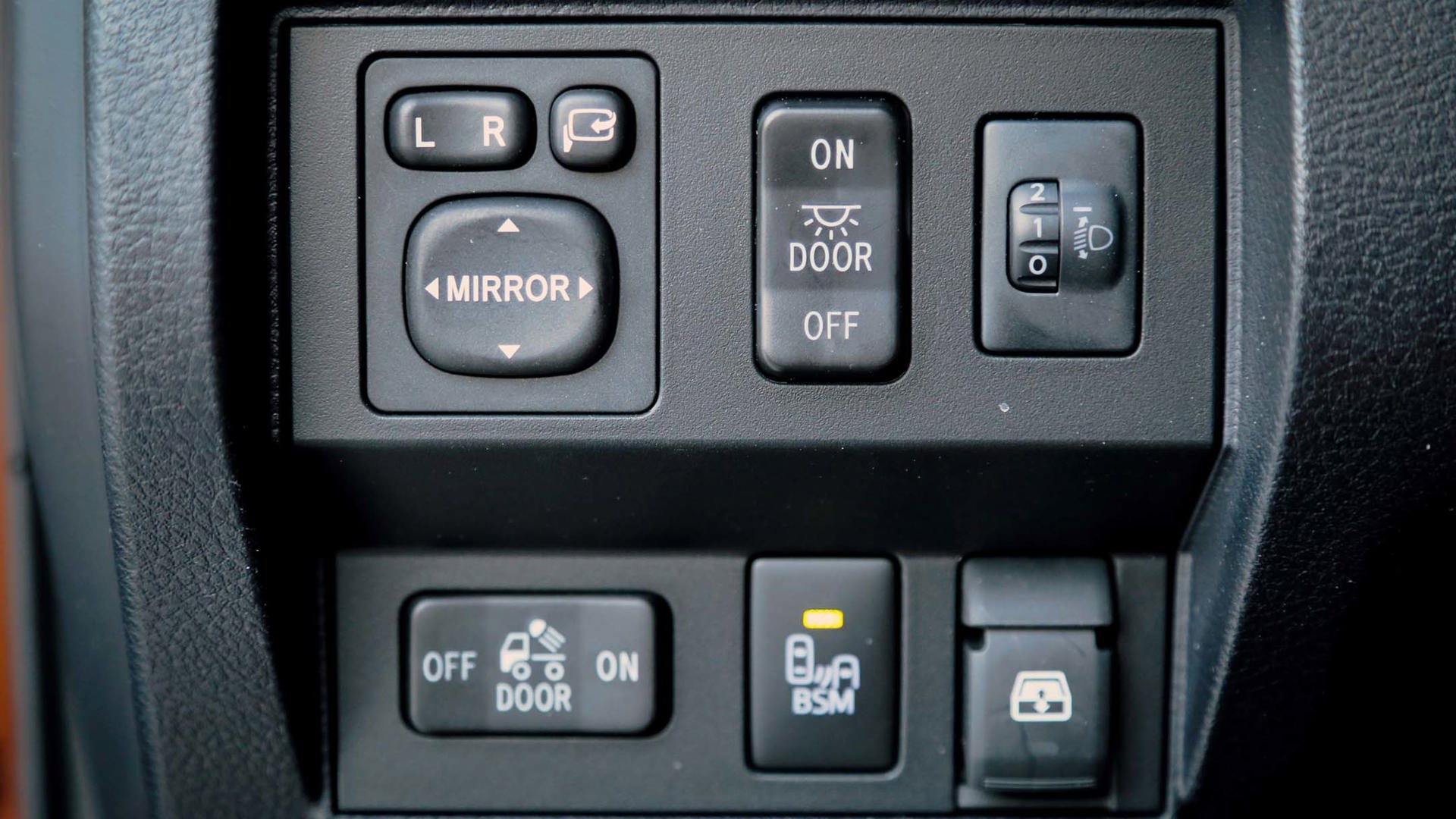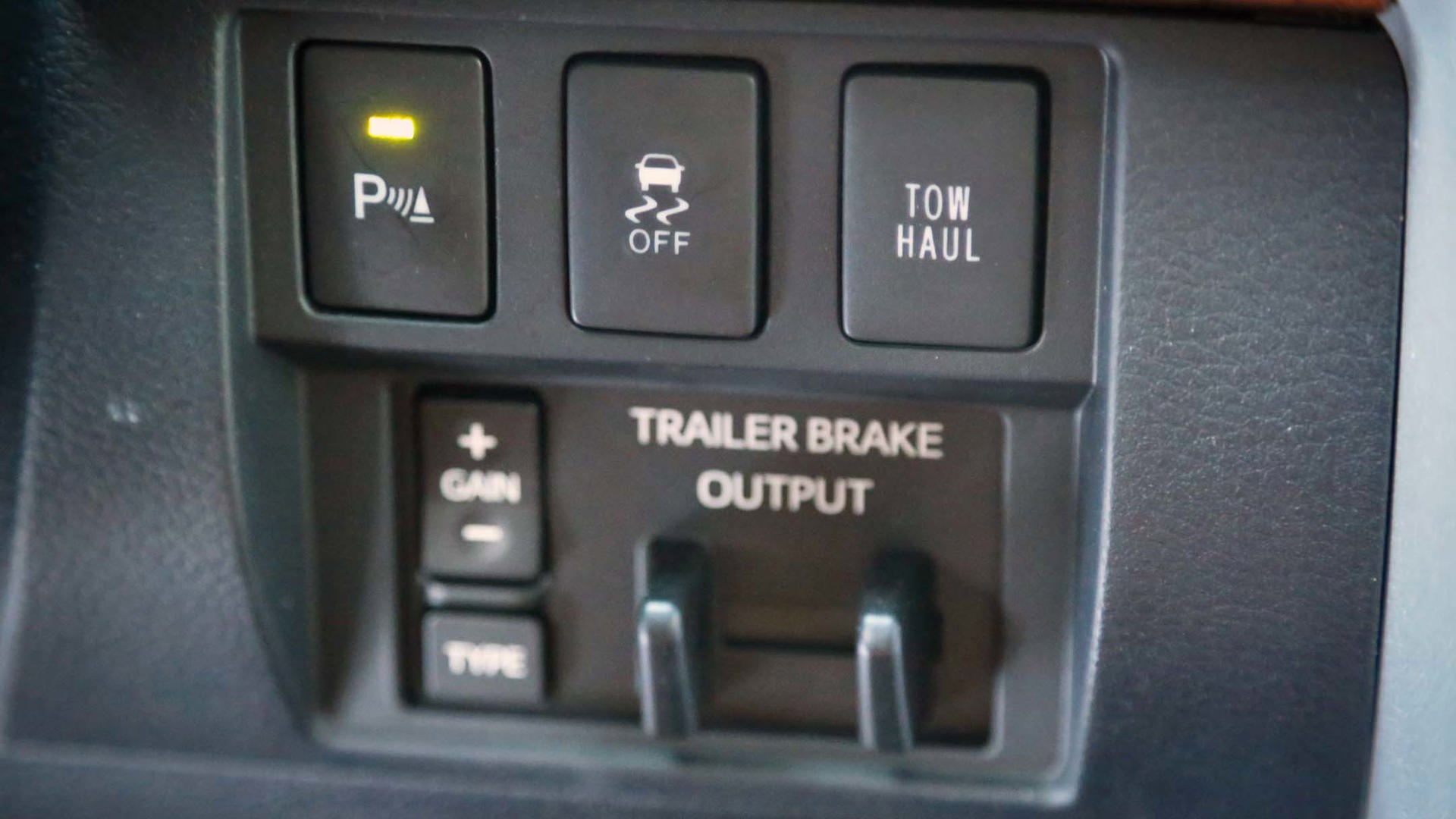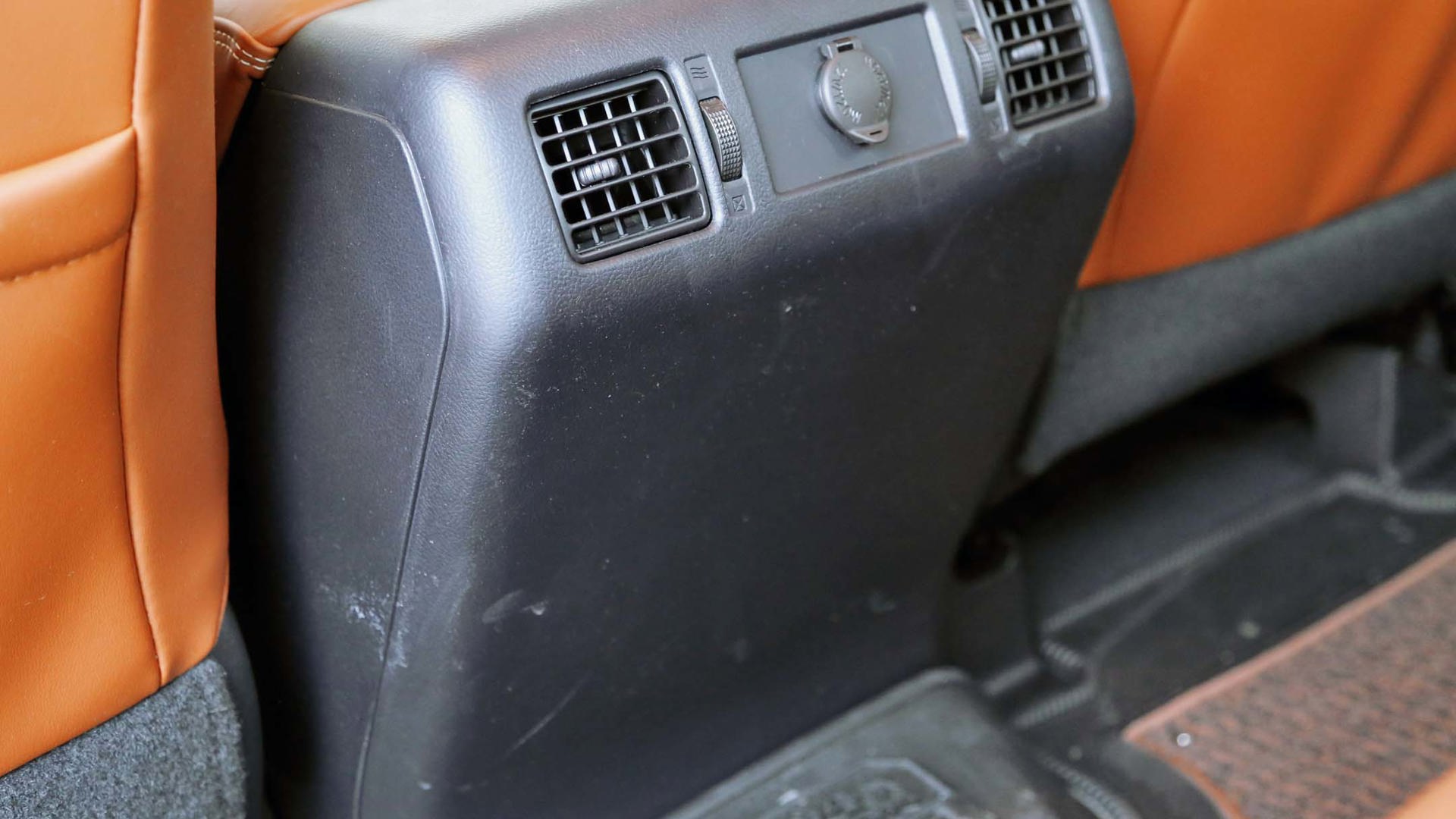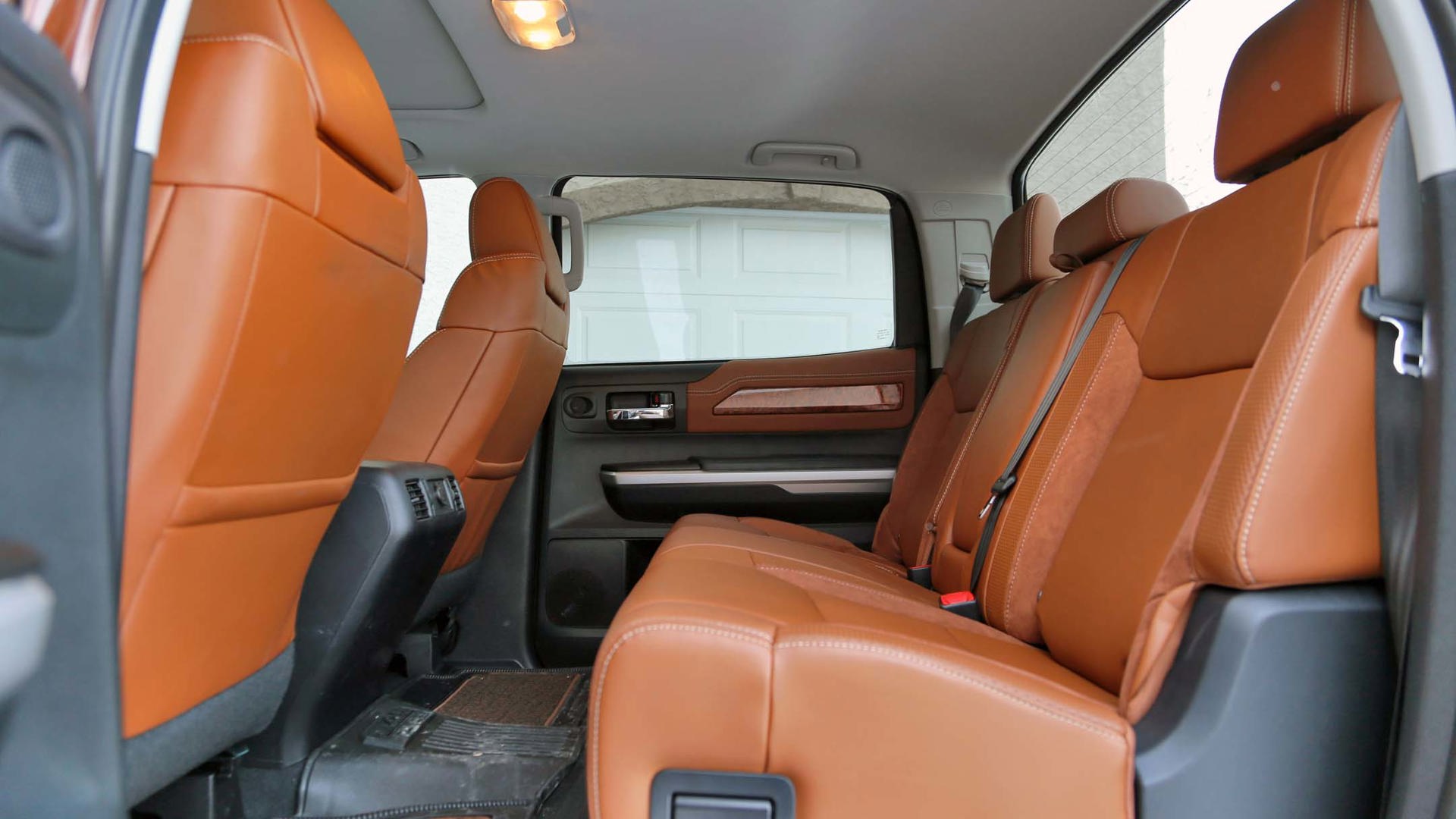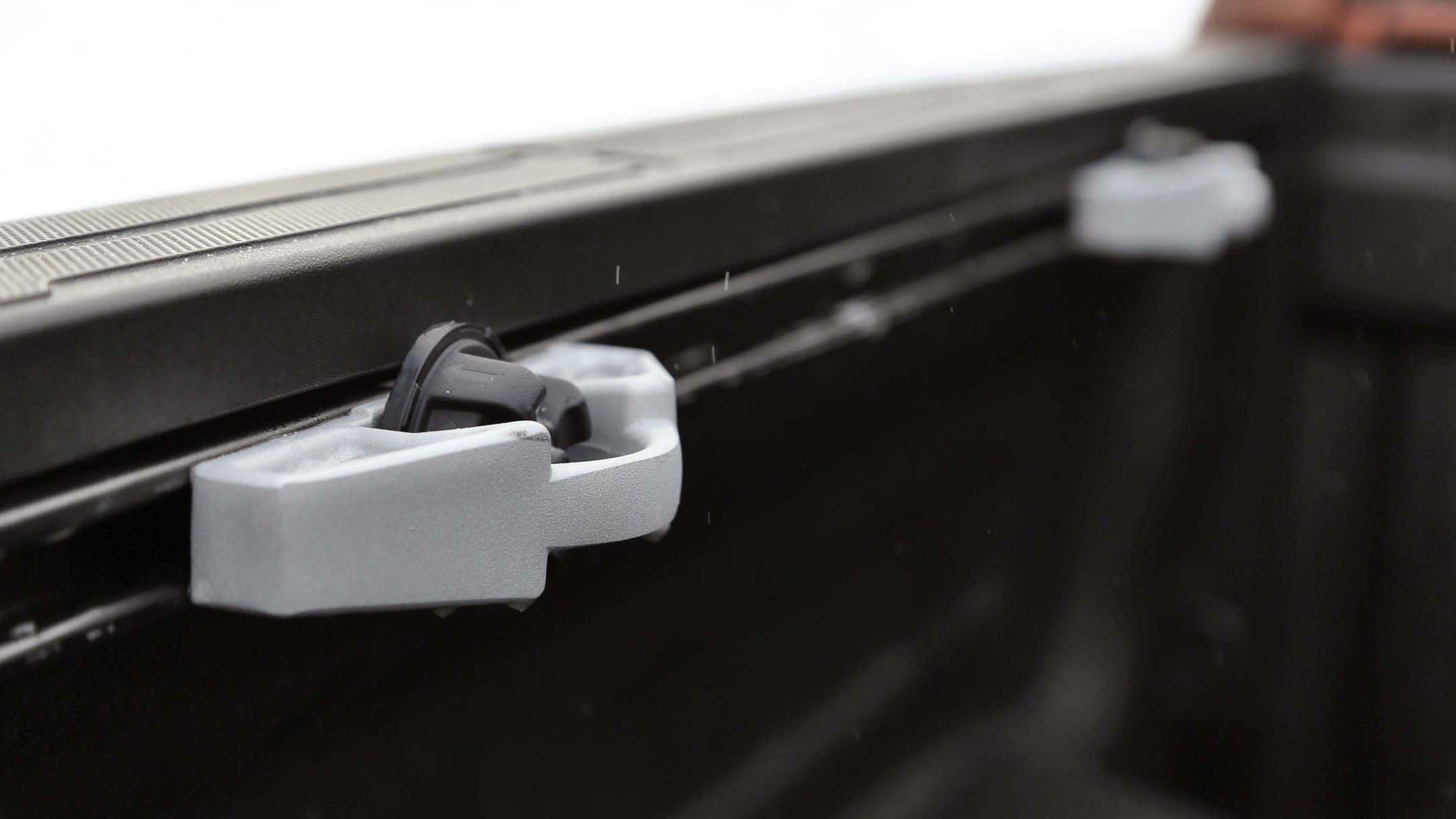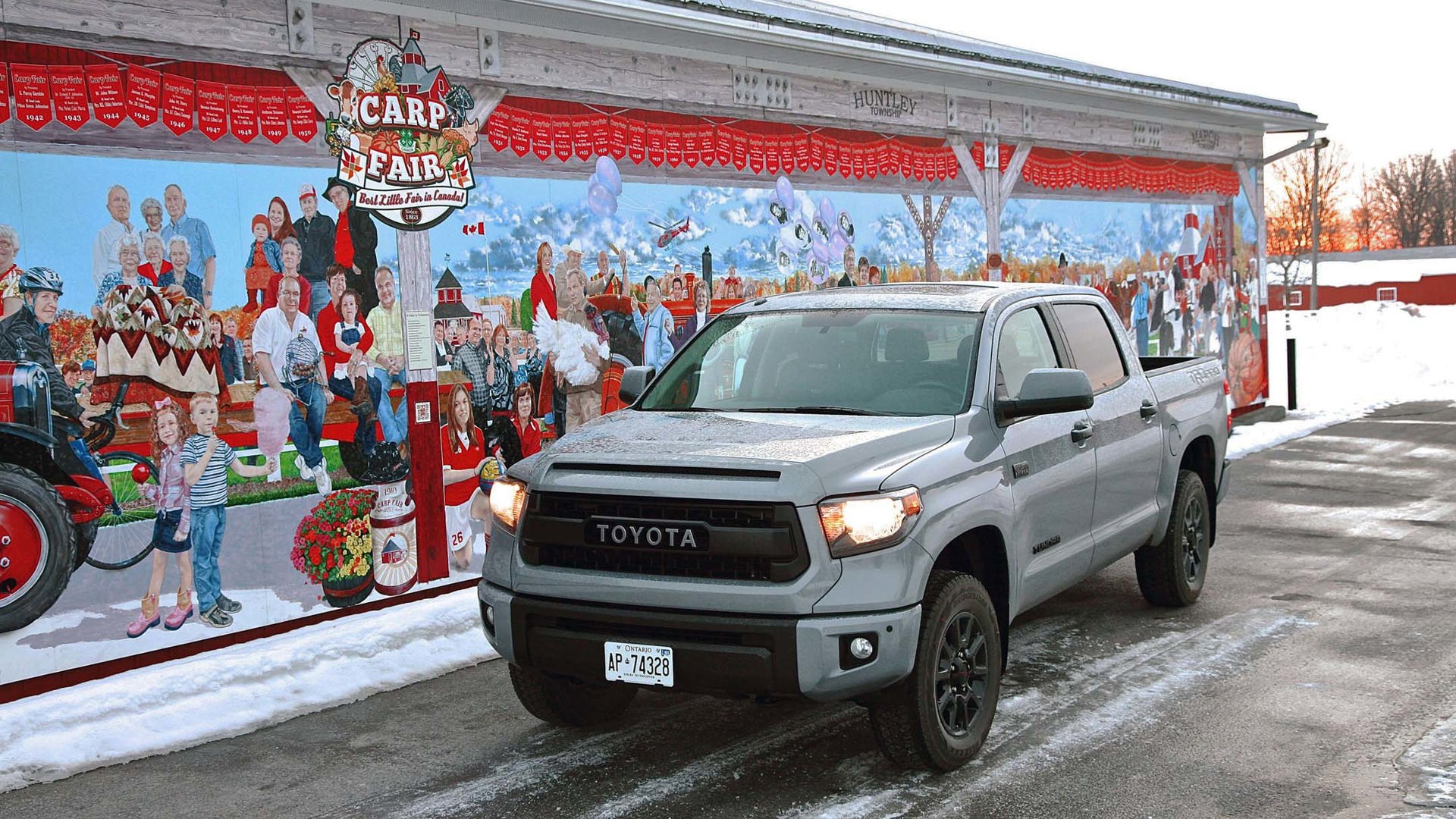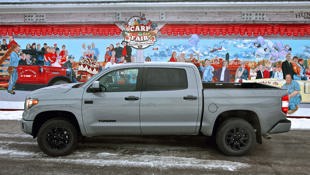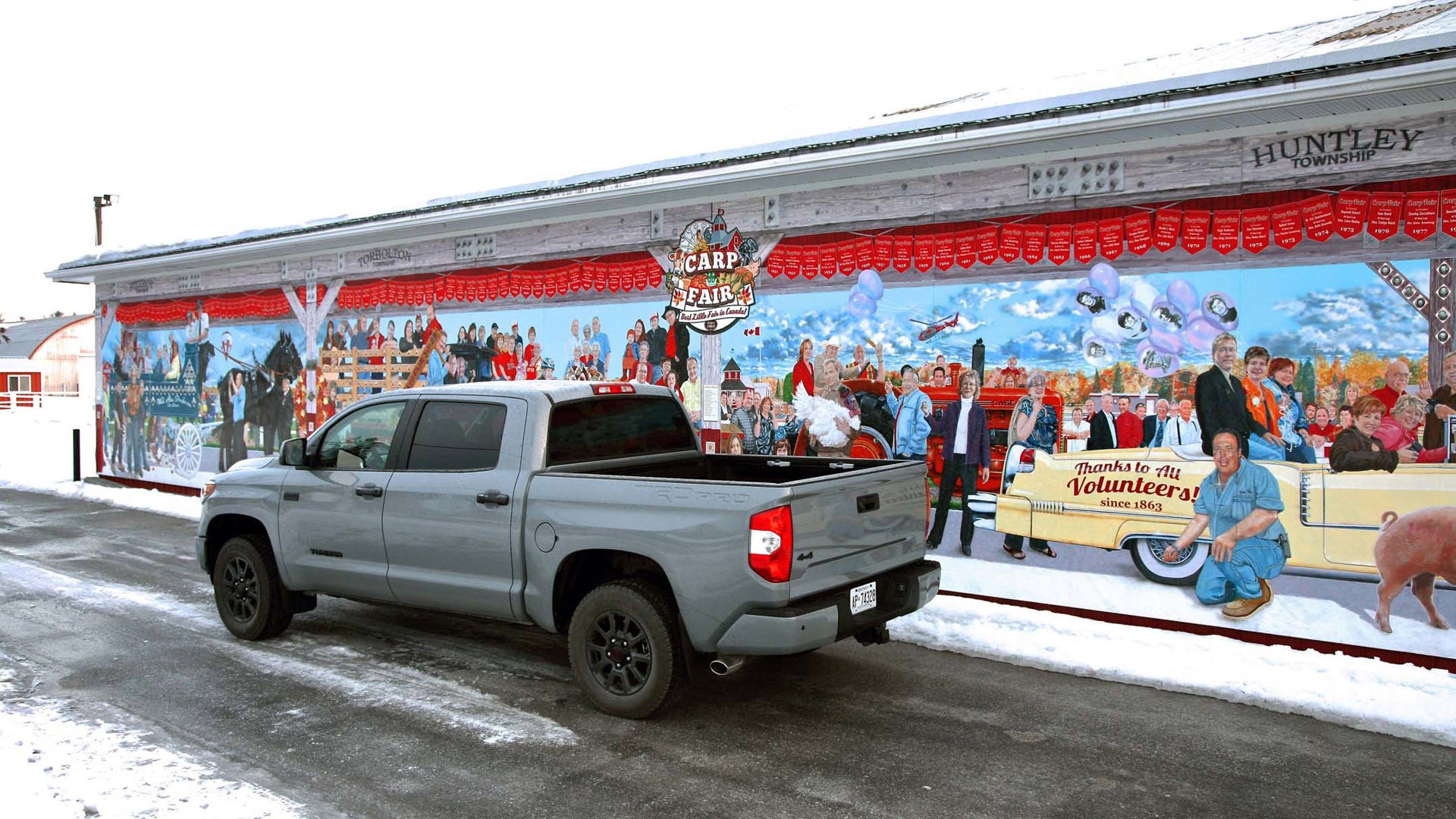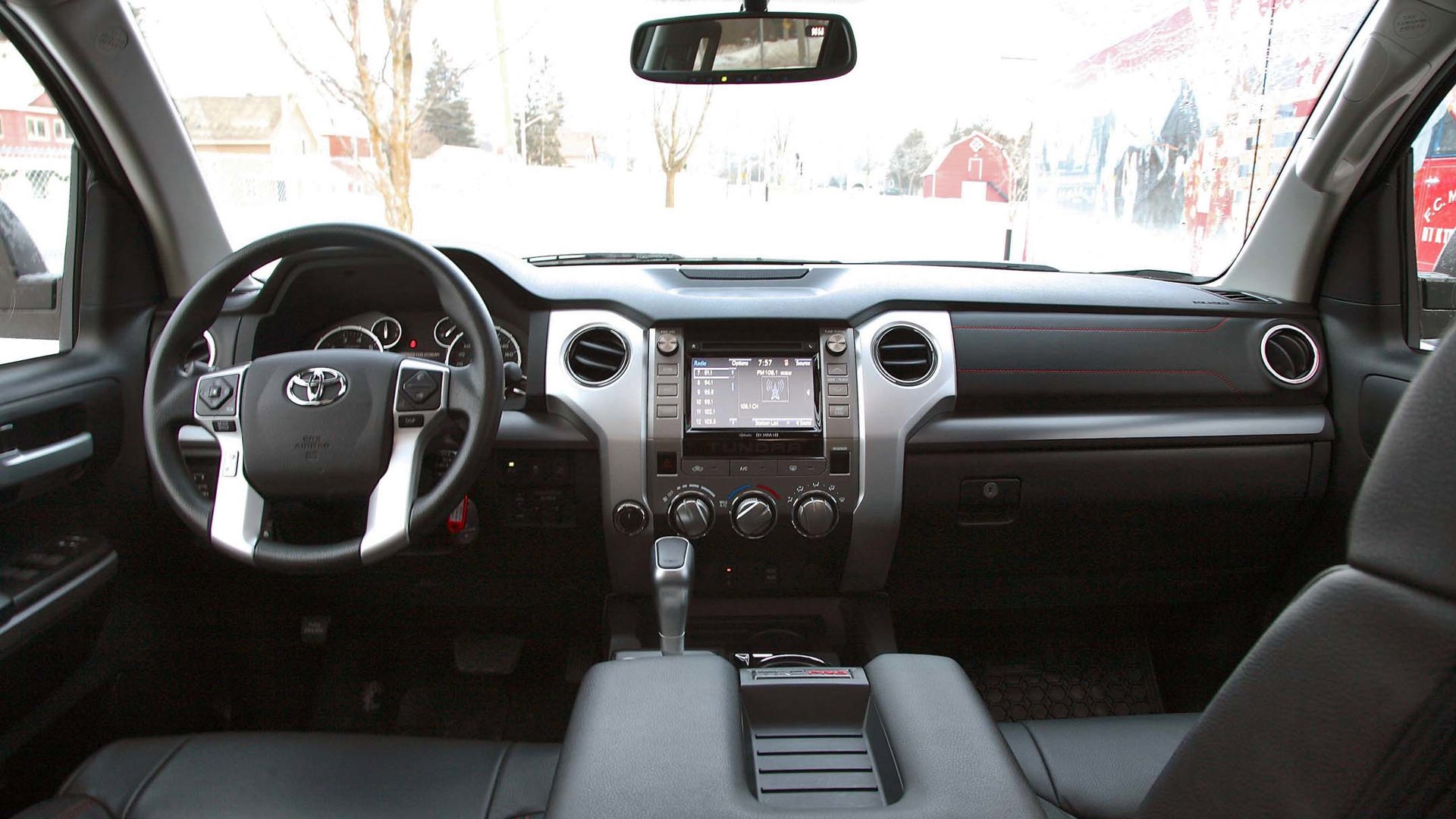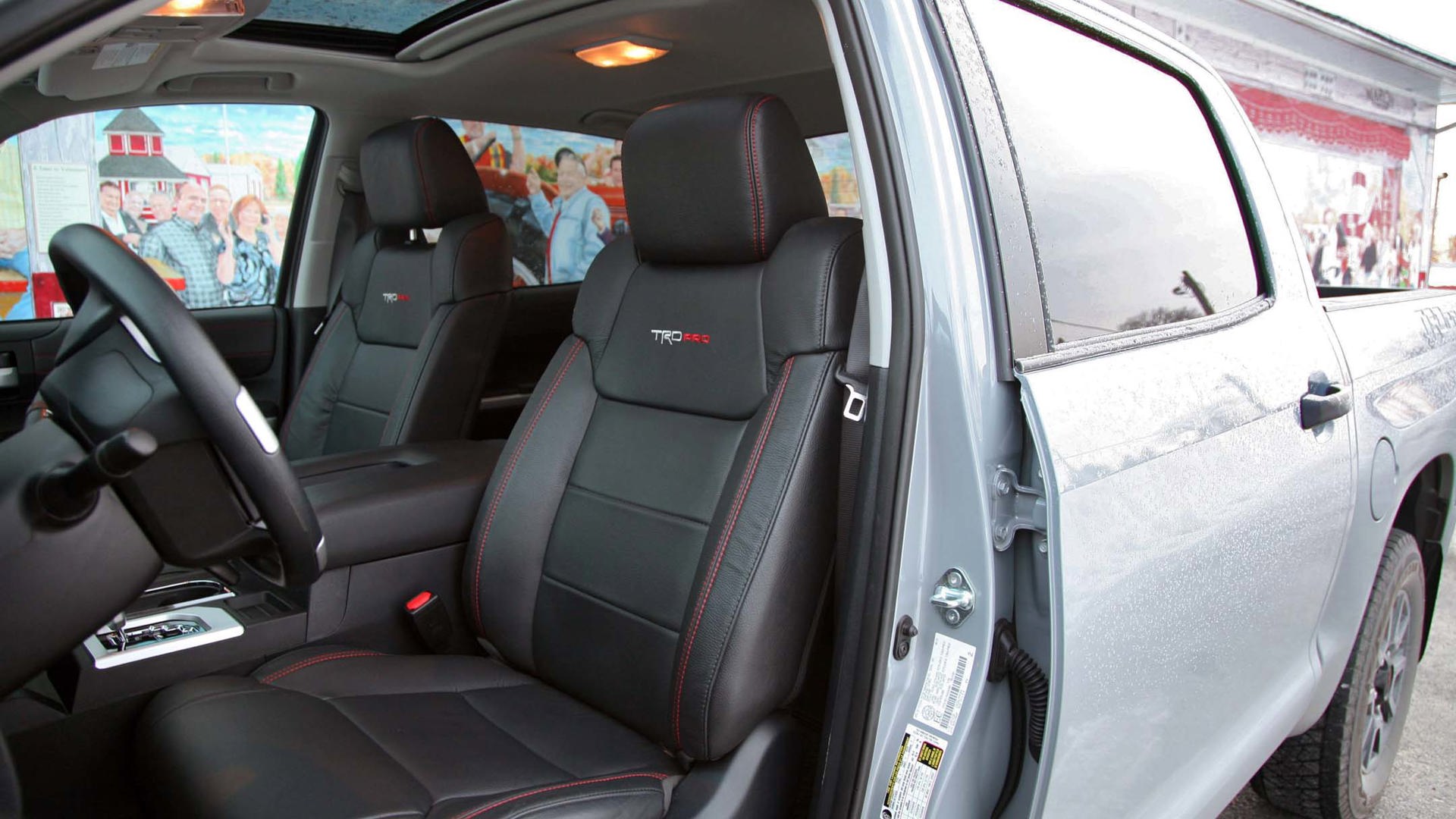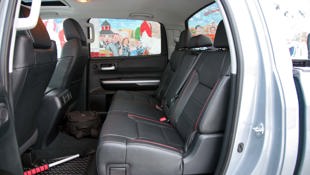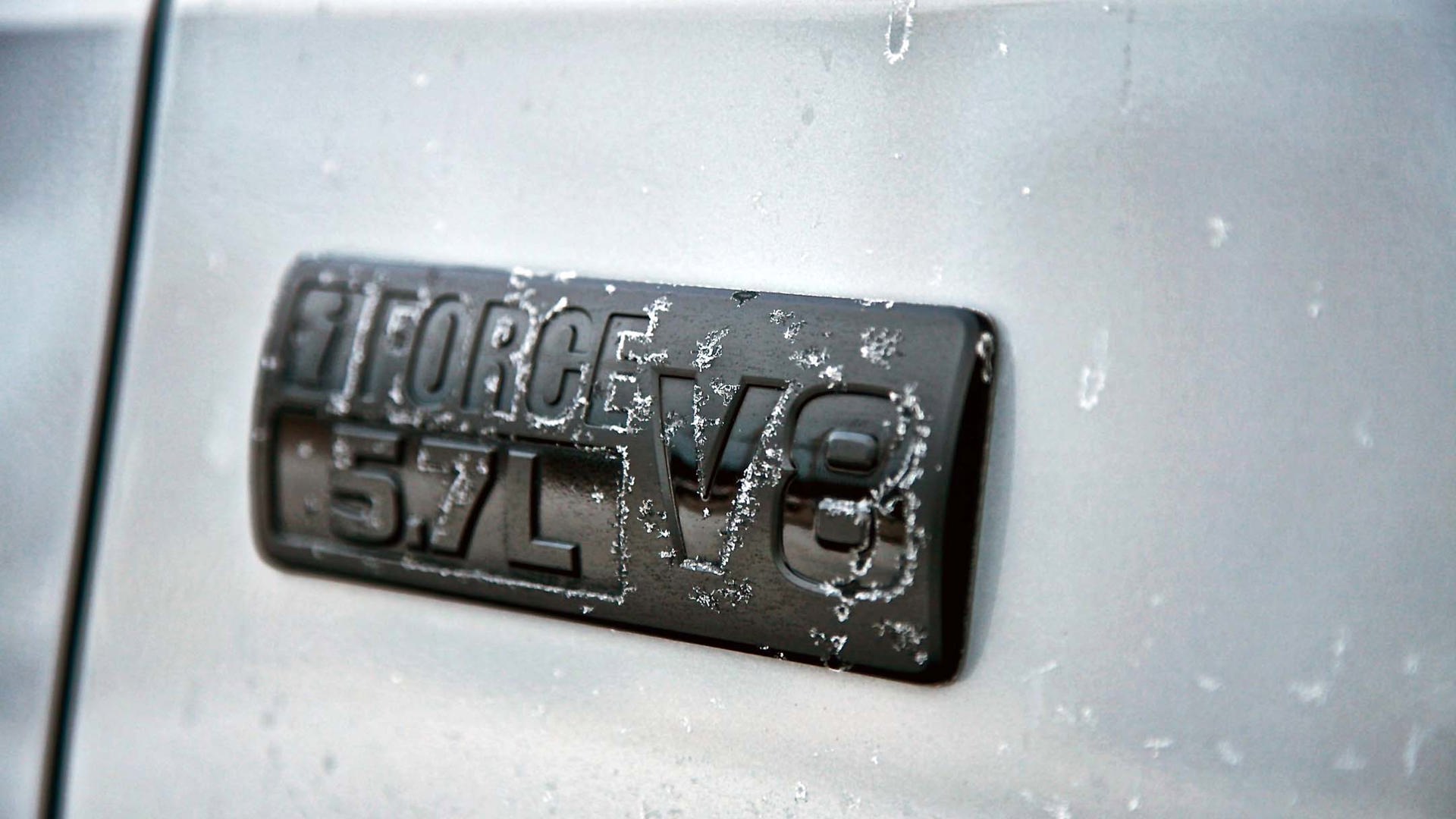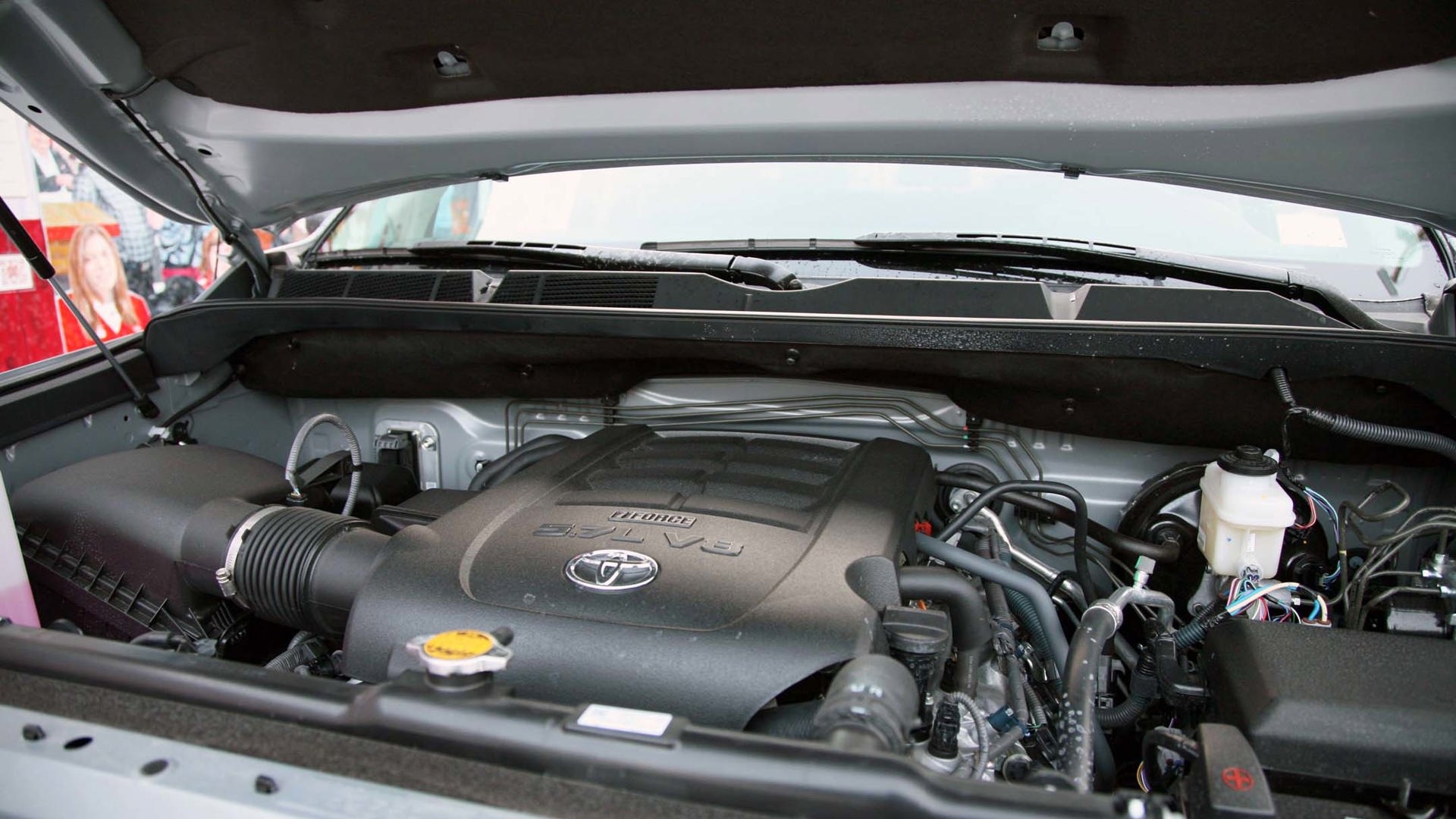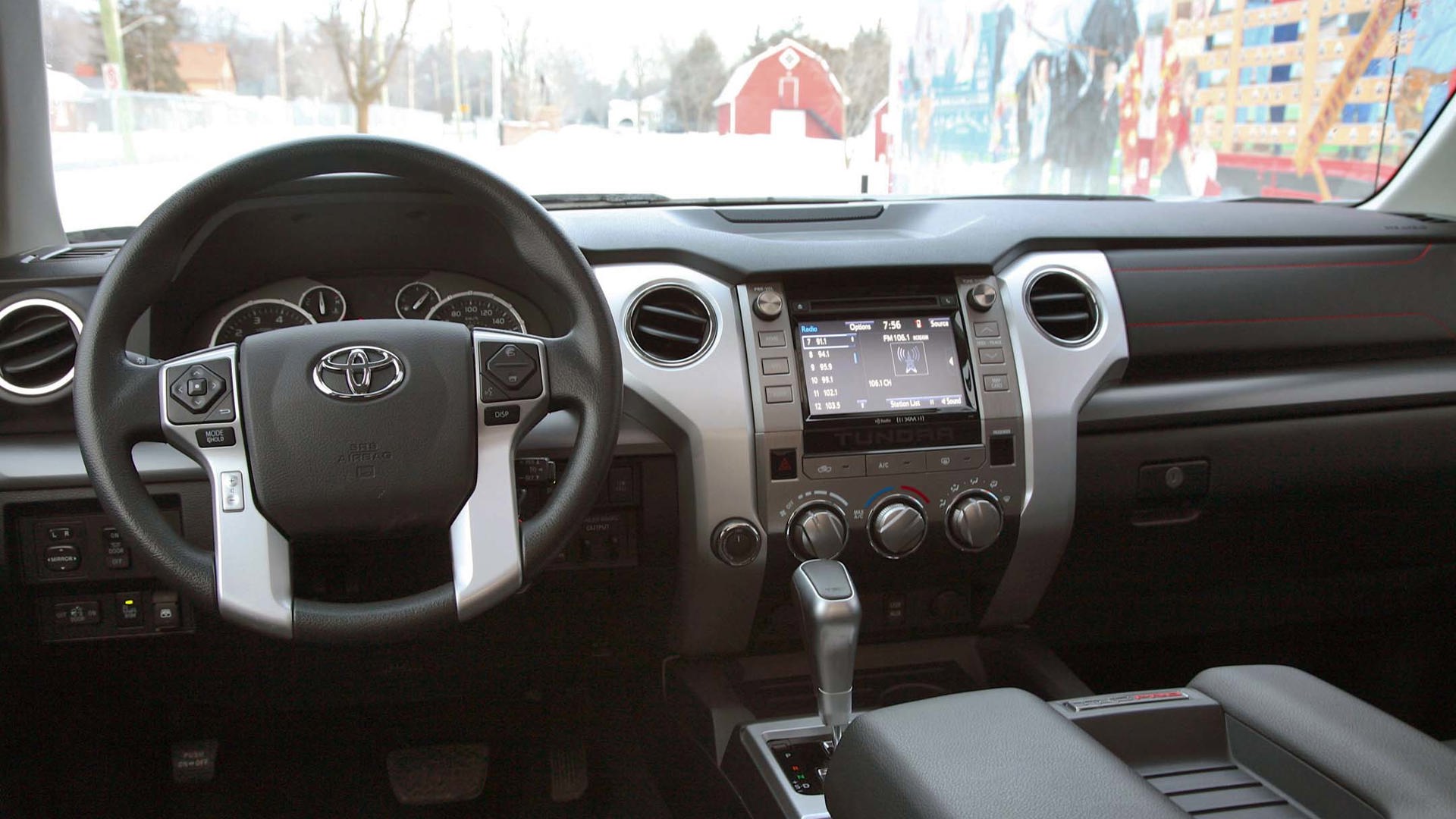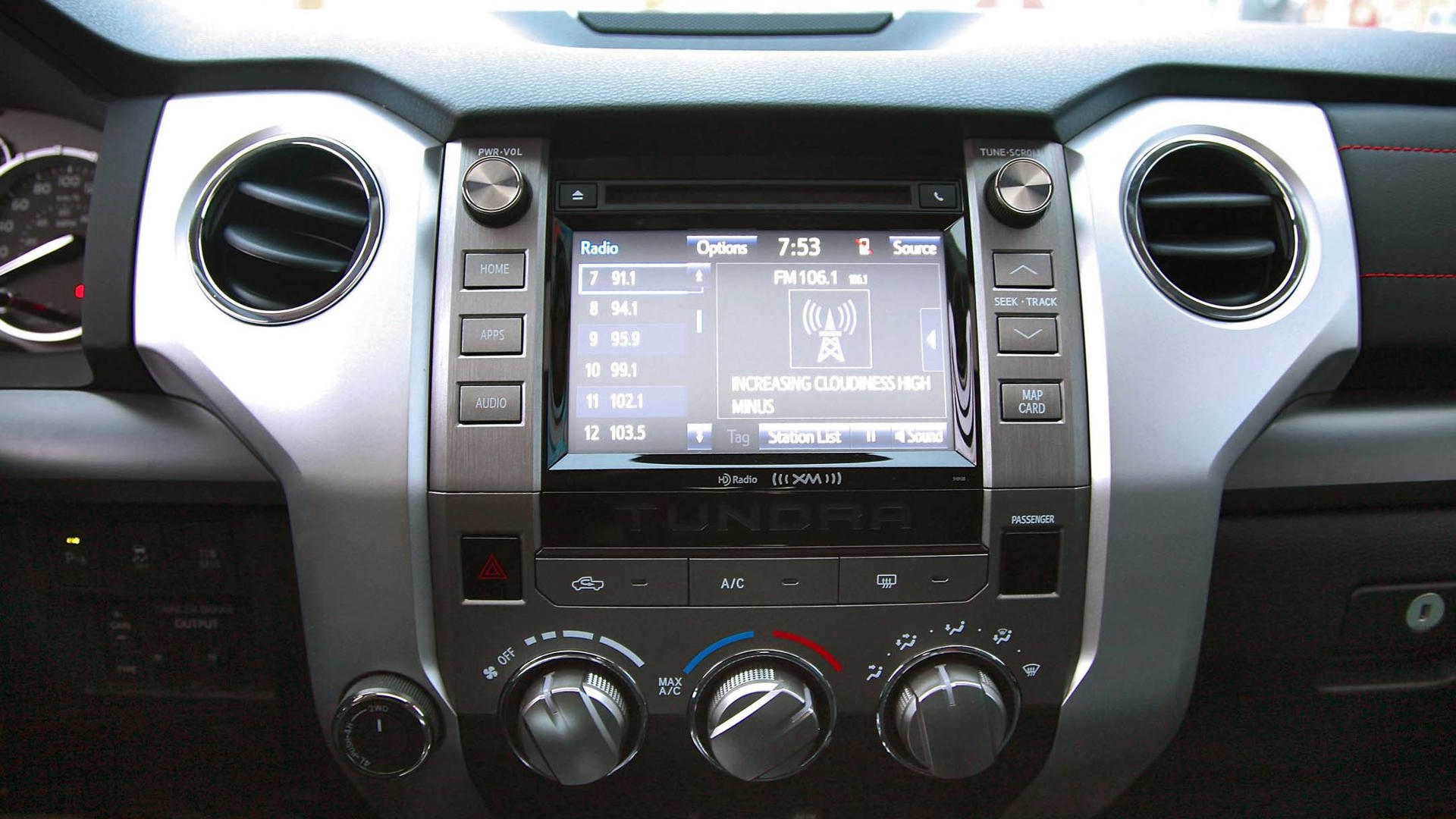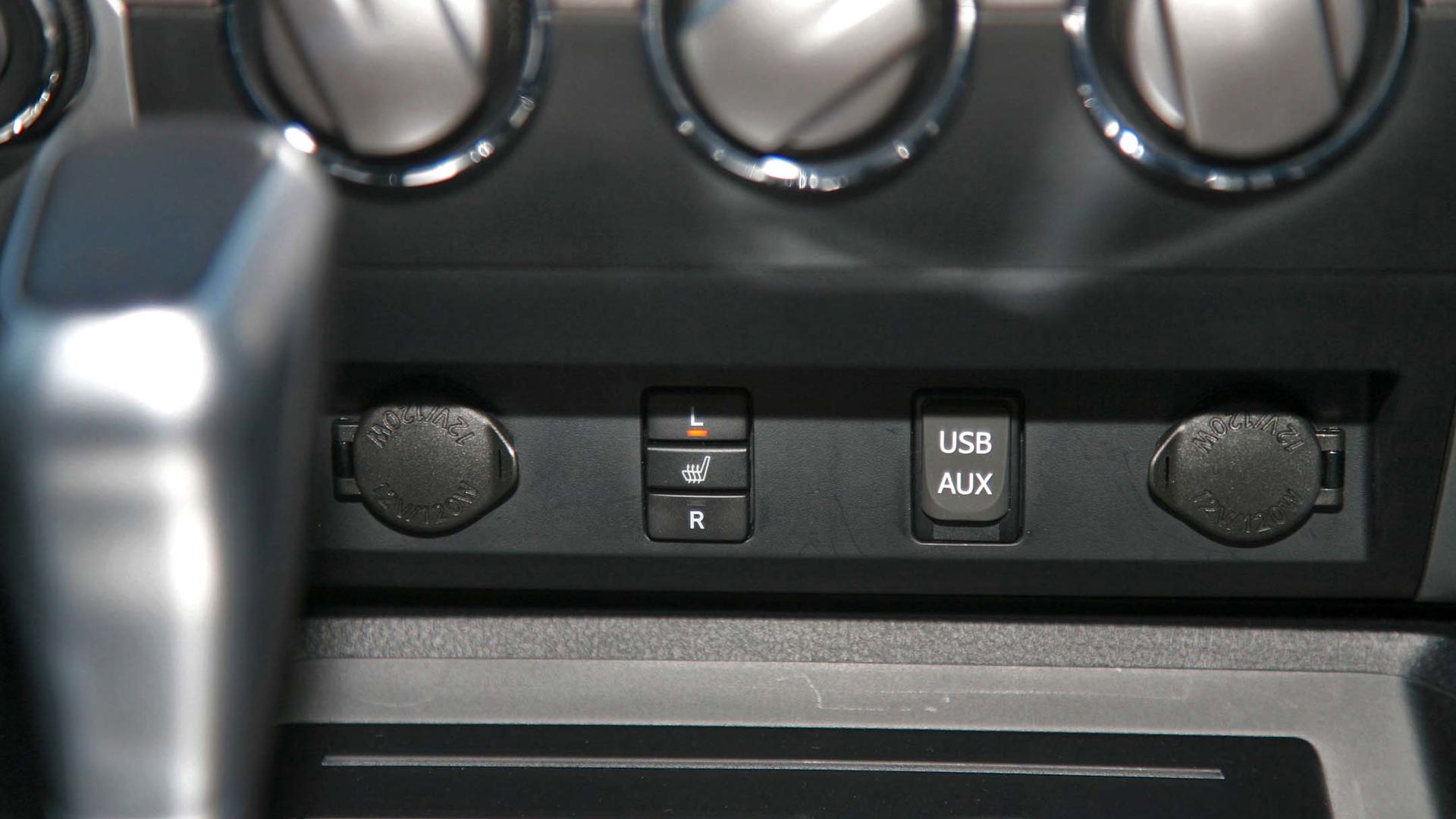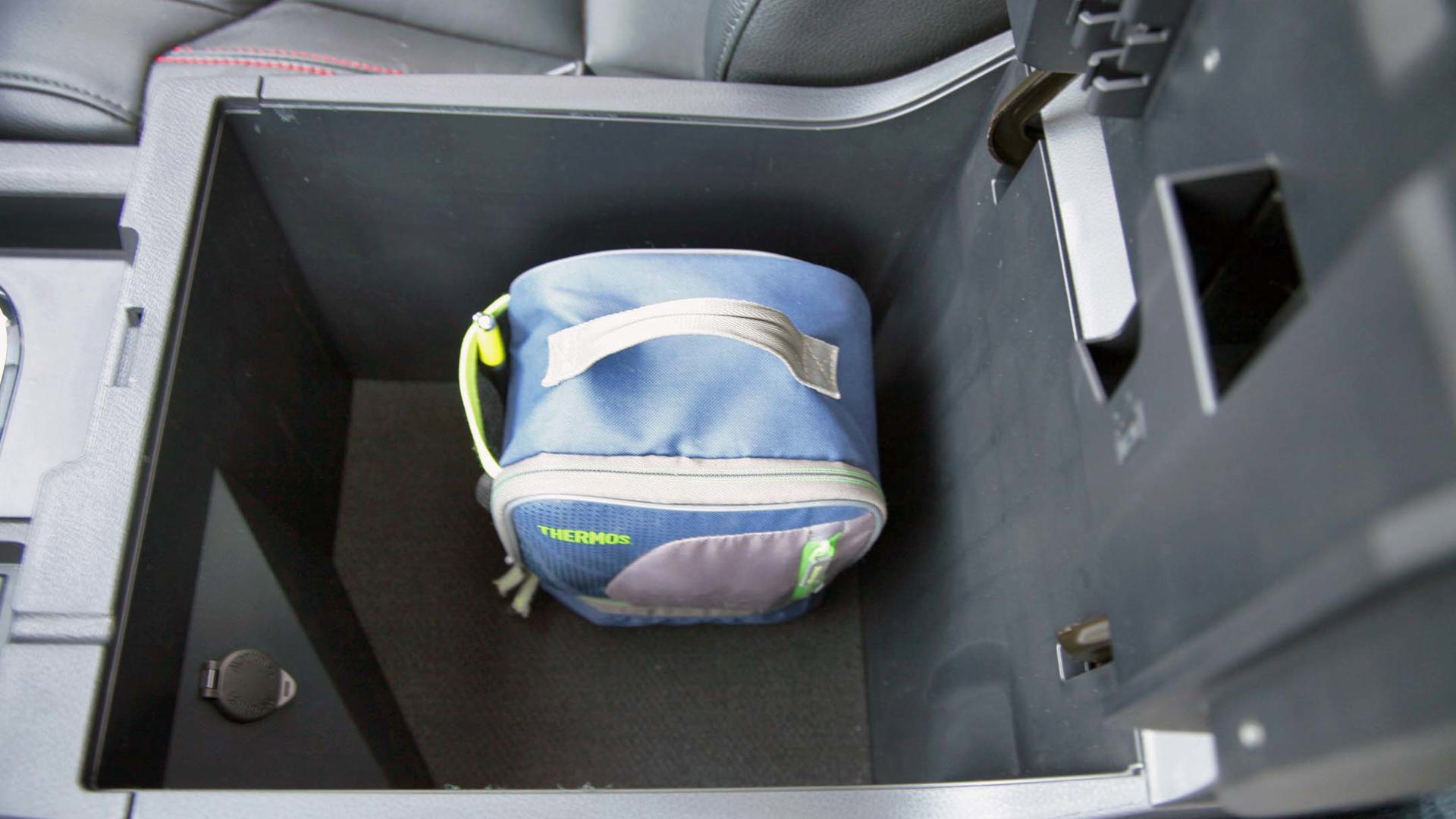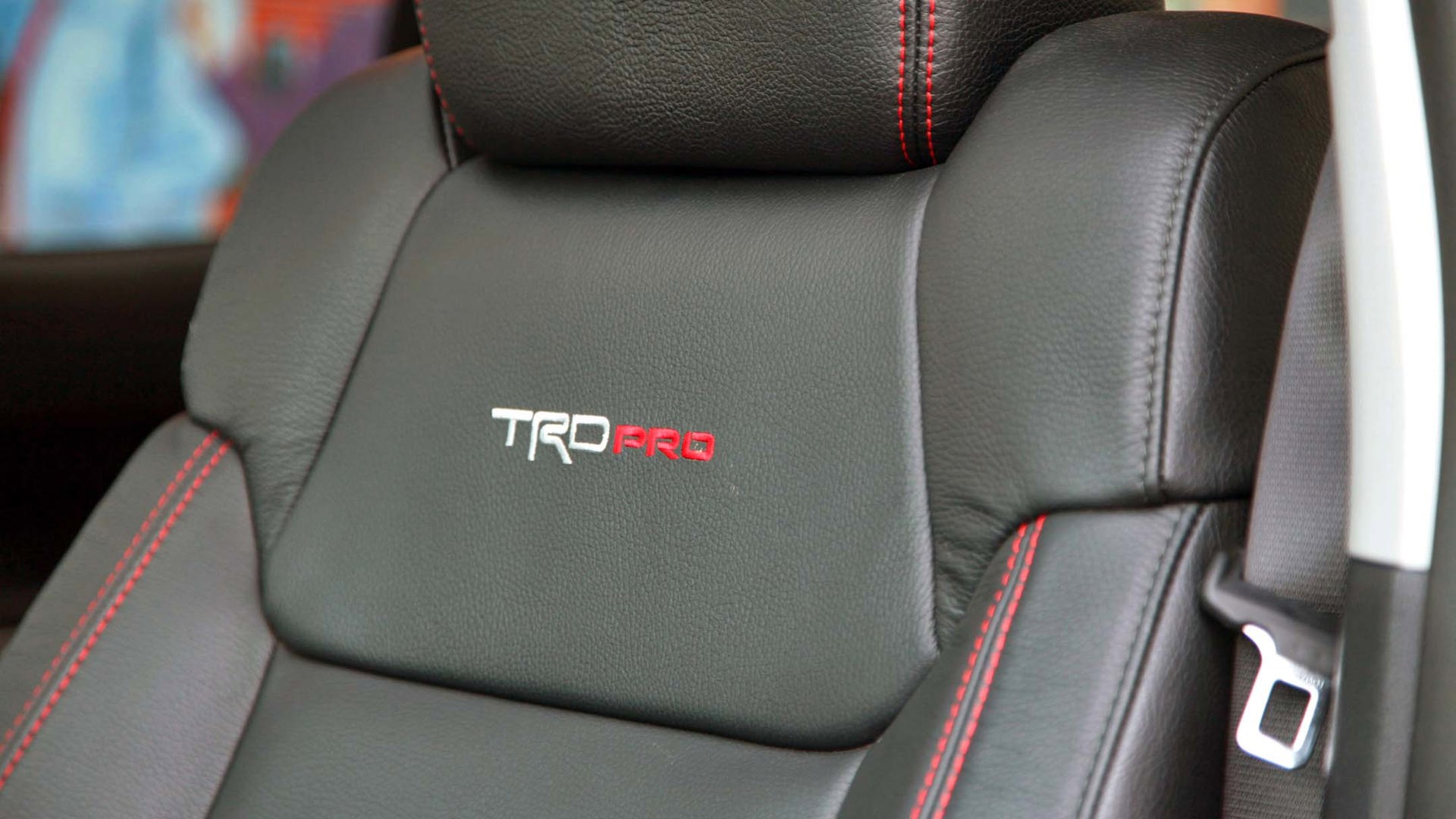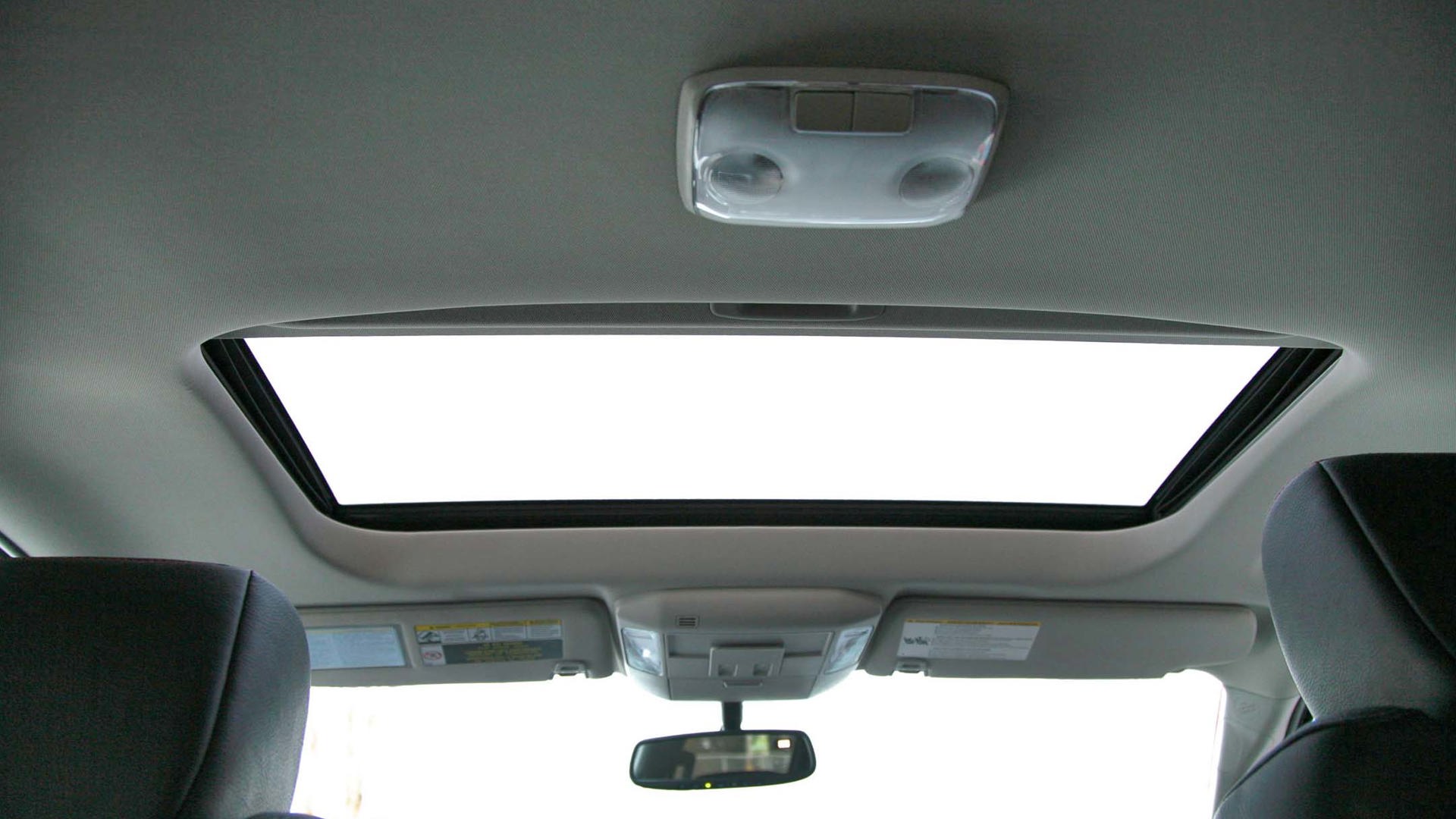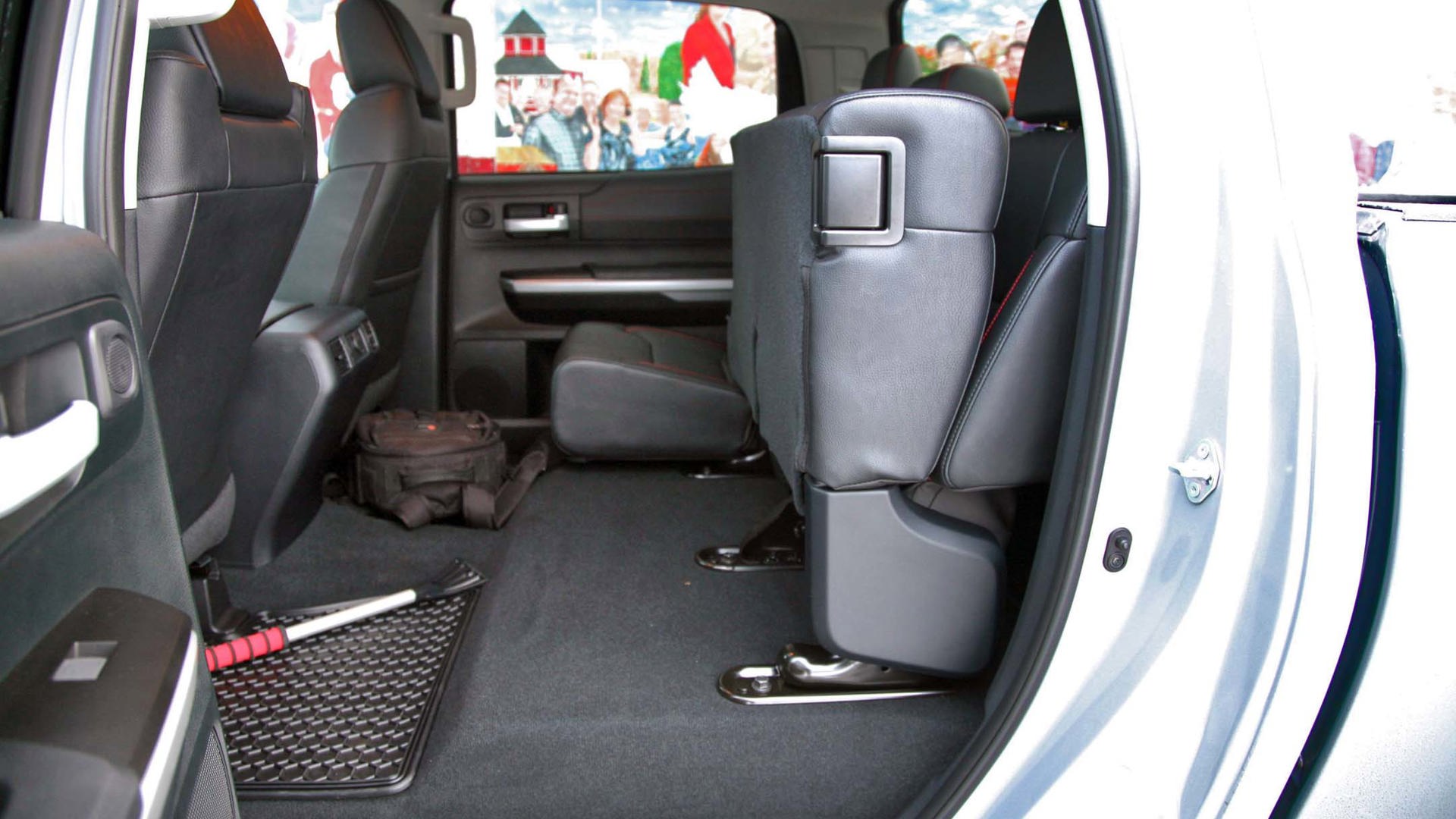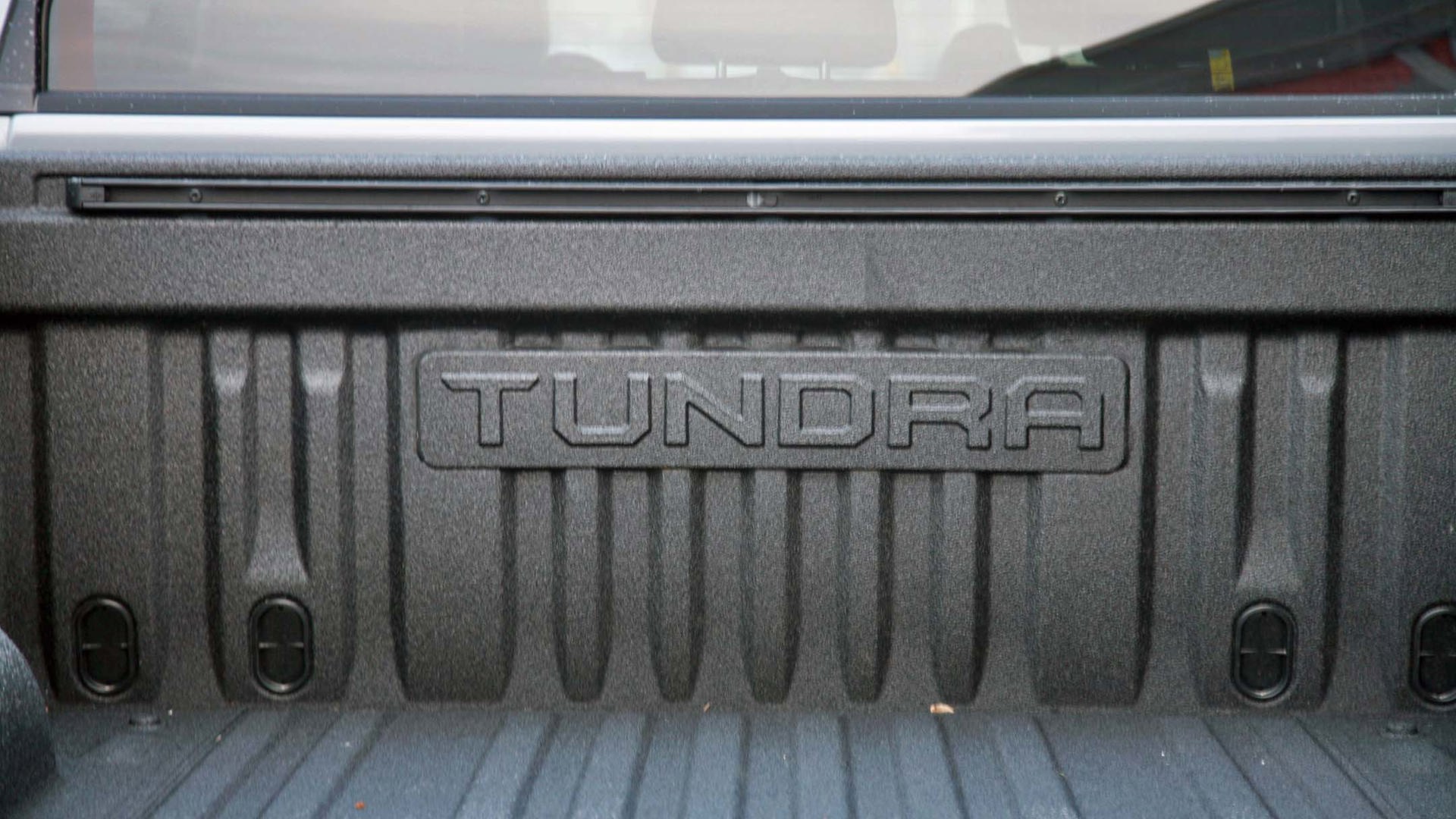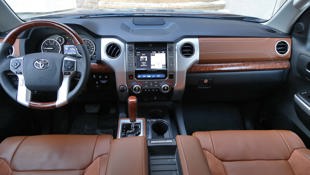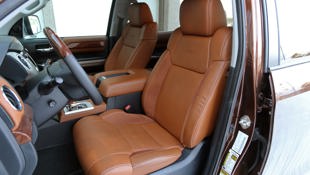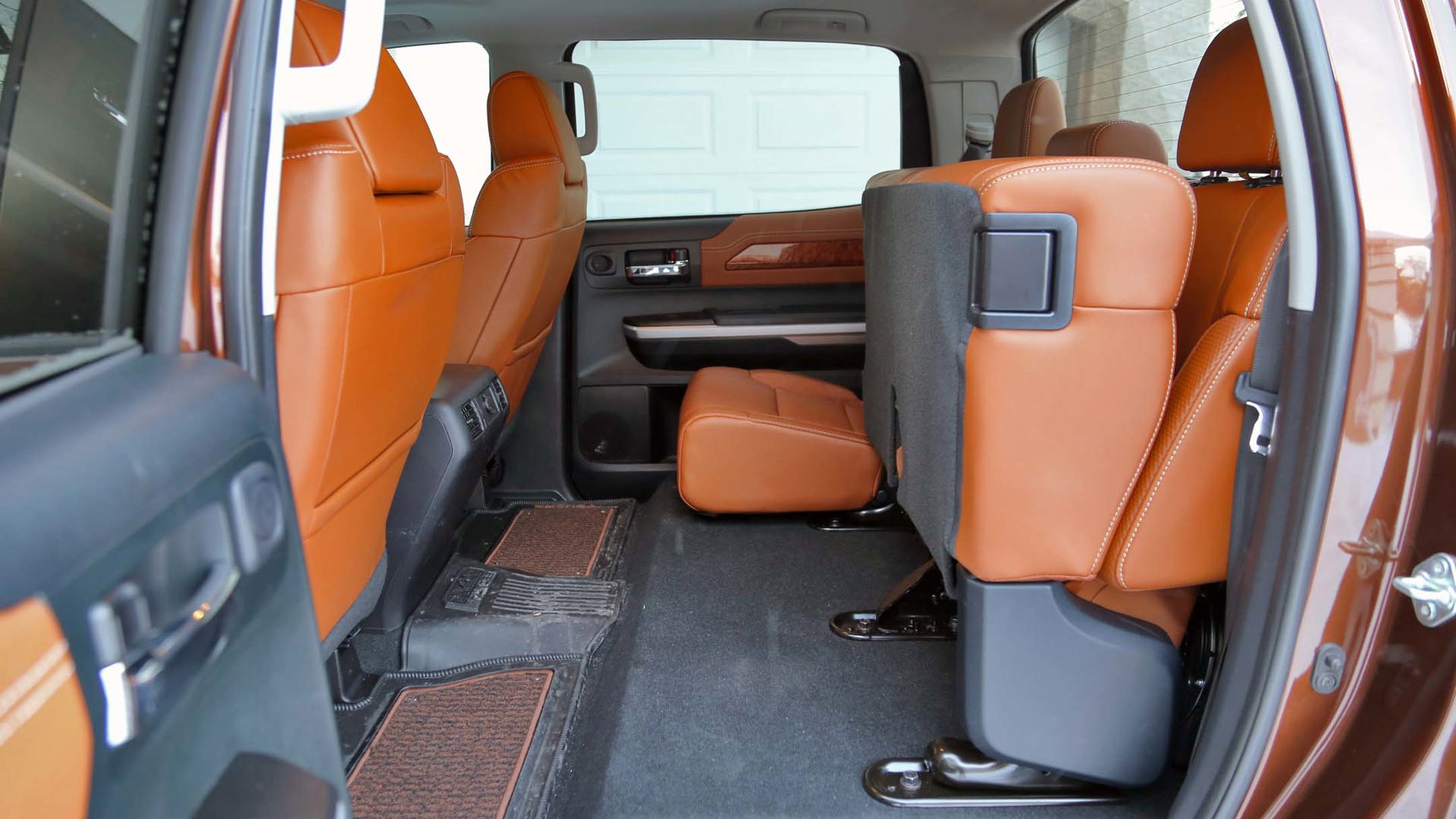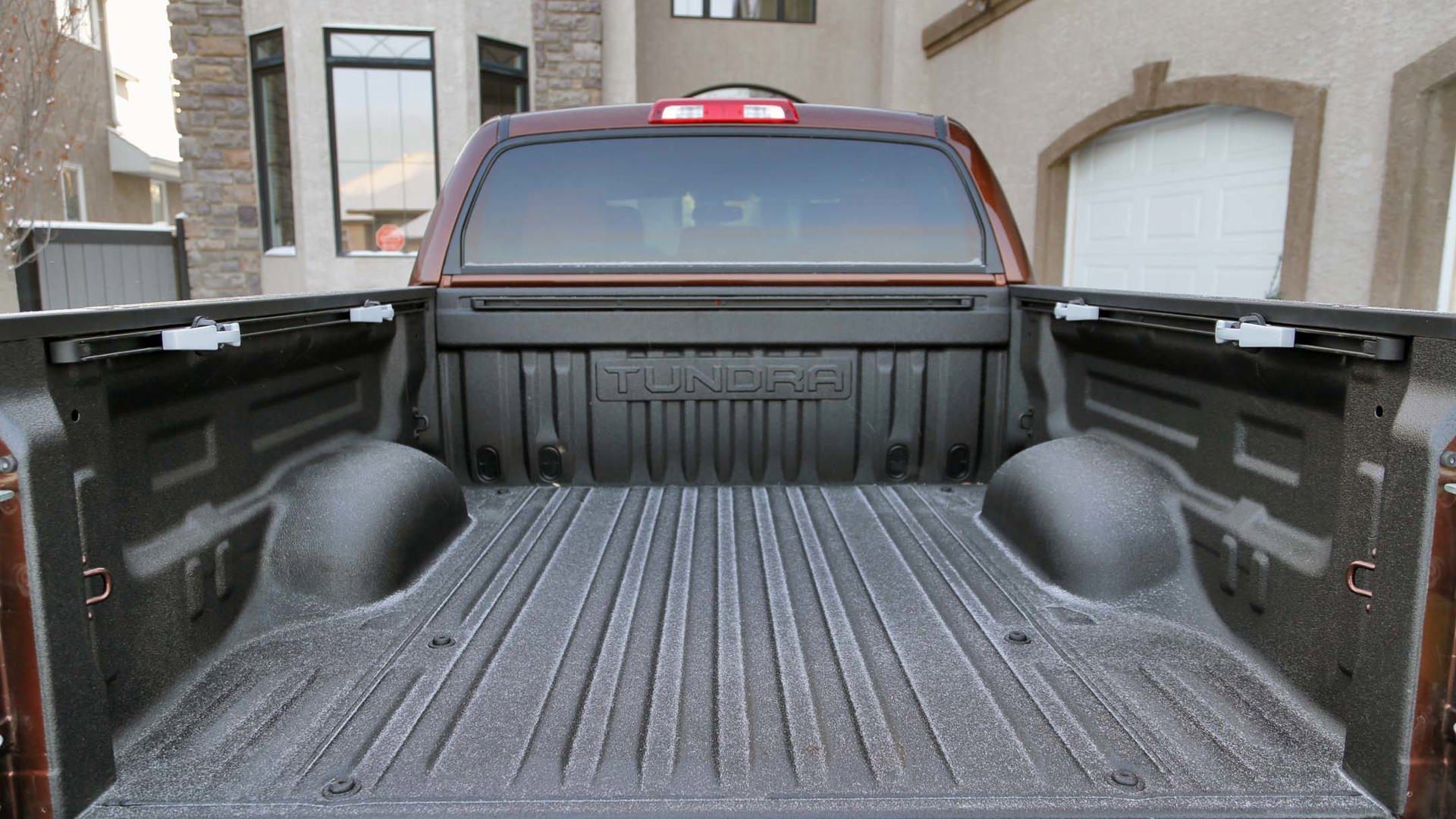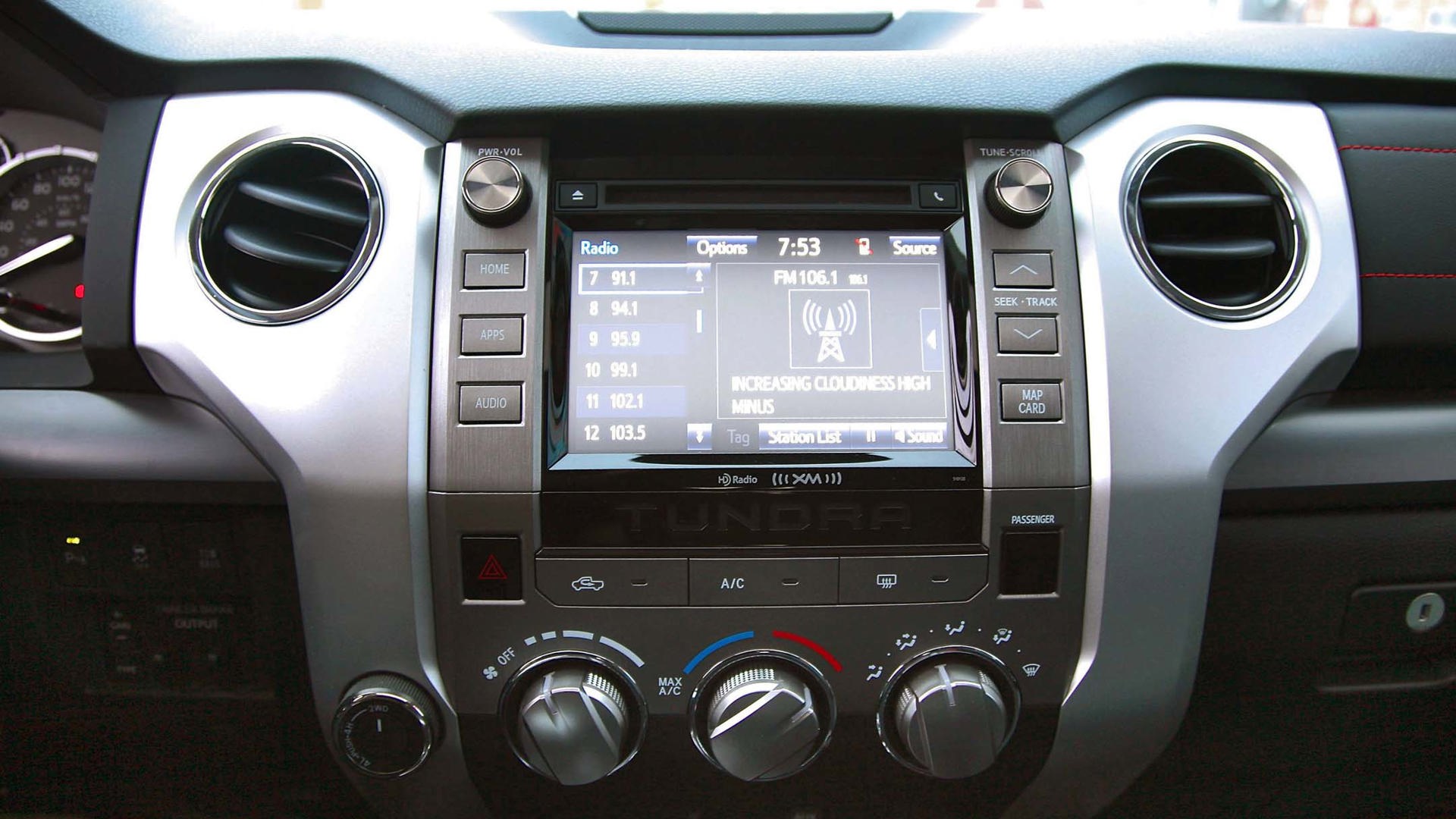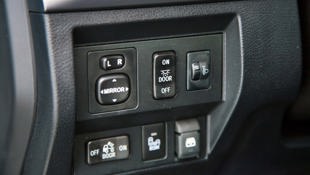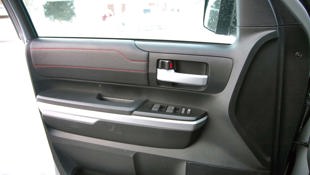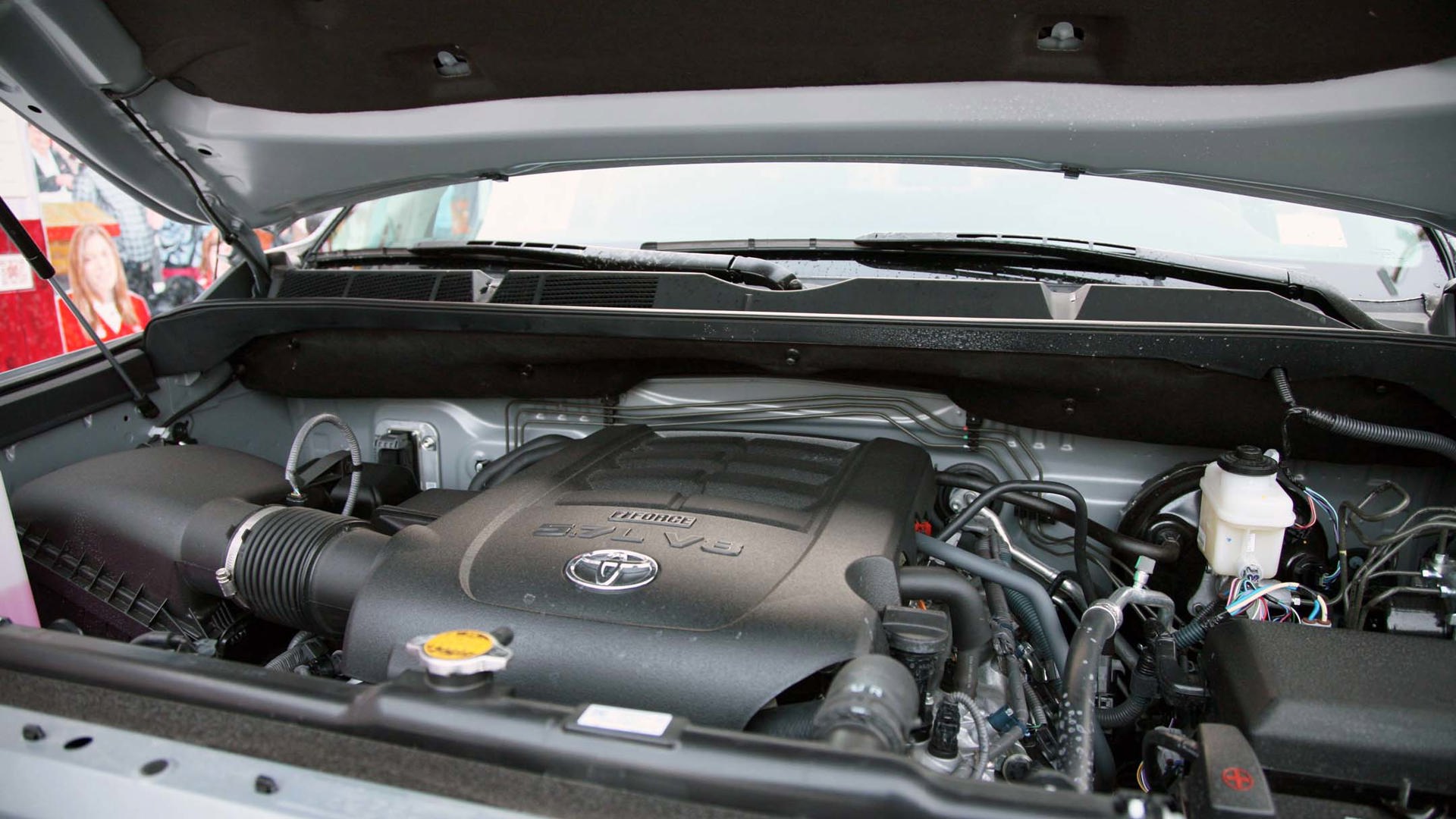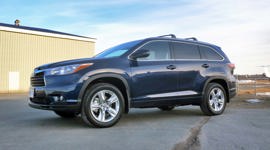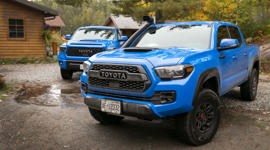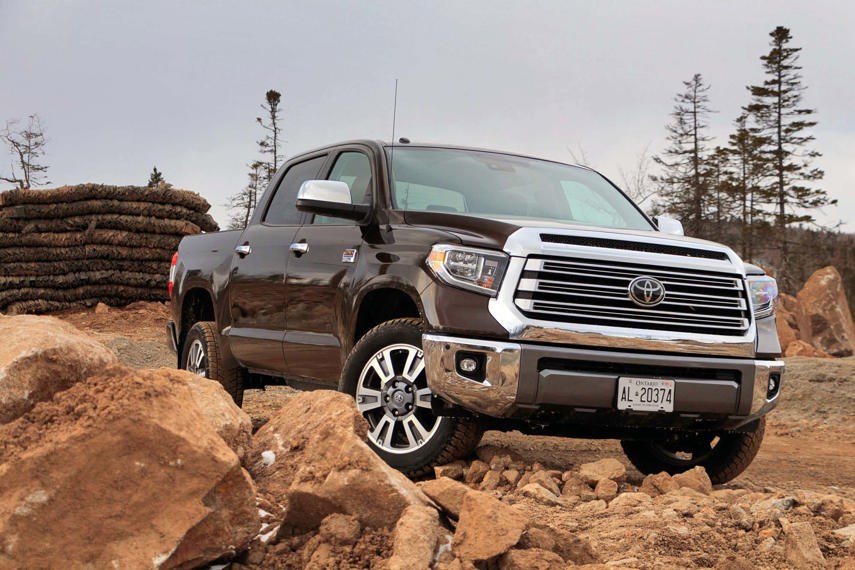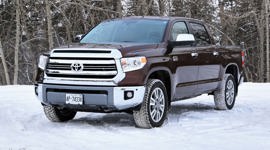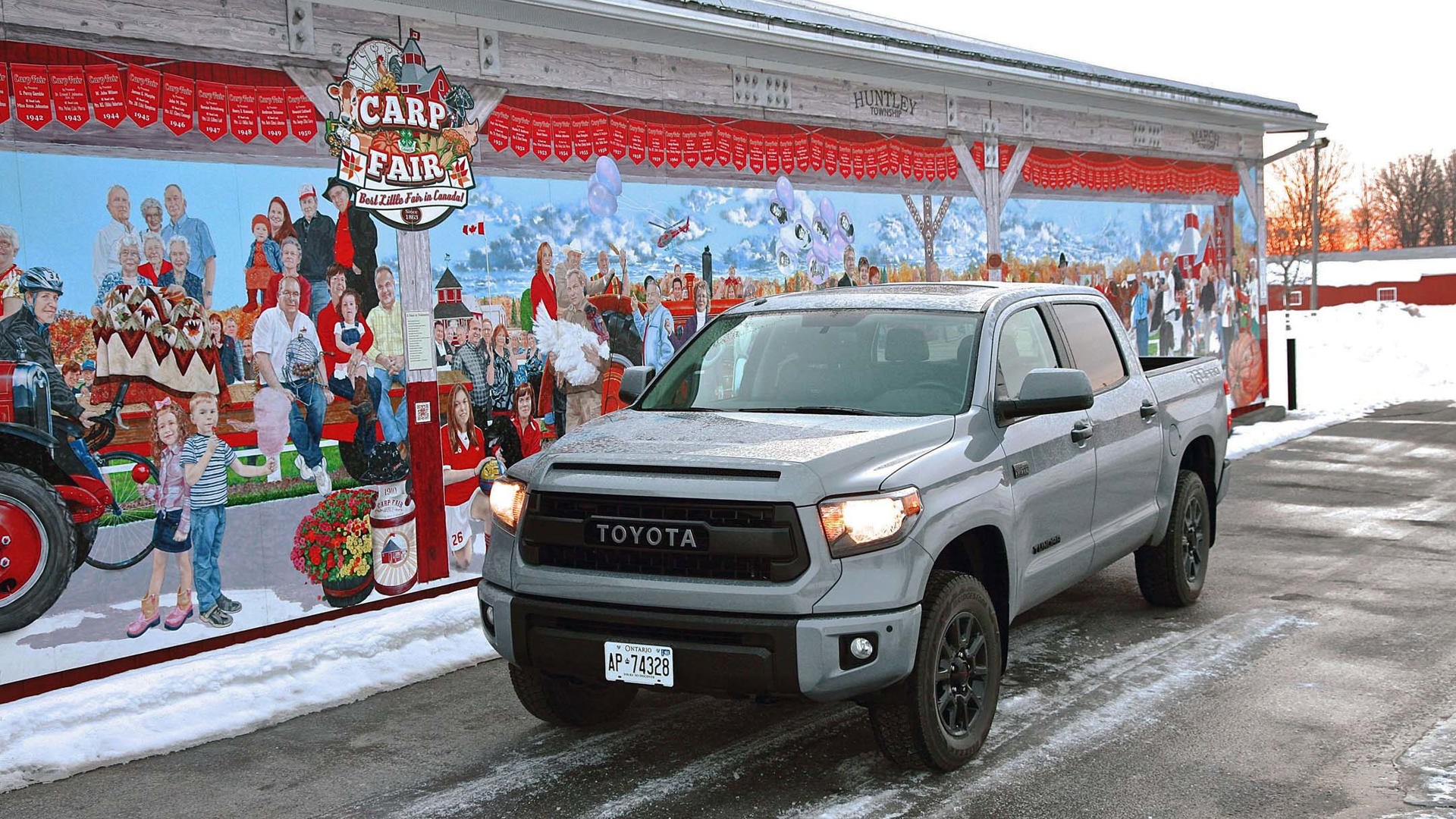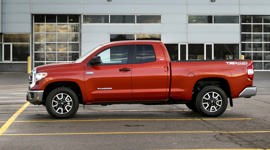Vehicle Type
Most Tundra owners report a positive experience, with ride comfort, performance, a solid and robust feel, and easy-to-use features being praised commonly.
Pickup Truck
History/Description
Thanks in no small part to the launch of the then-latest GM pickup trucks, the Toyota Tundra underwent a major overhaul for model year 2014. Though not an all-new model, many facets of the Tundra were updated and tweaked. Styling was revised, as were the steering and suspension systems, the cabin, the feature content, and more.
Tundra remained available with a multitude of trim grades, body styles, powertrains, and feature packages to help match it to a wide range of needs. With 10 models and 25 possible configurations, there was a Tundra for just about any shopper.
Bluetooth and a back-up camera system became standard on all models, and the interior featured an upgraded design, and upgraded displays and instrumentation. For safety-minded shoppers, the Toyota STAR Safety System was also included on all models.
Trim grades included the more basic SR, the value-bundled SR5, and the generously appointed Limited. High-grade Platinum and 1794 Editions were available as well.
Feature content may include a JBL audio system, 20-inch wheels, power seats, blind spot monitoring, dual-zone climate control, keyless entry, a power sliding rear window, automatic lights, and plenty more.
Engines / Trim
Toyota Tundra was powered by one of two available V8 engines. The popular 5.7-litre i-Force V8 cranks out 381 peak horsepower and up to 401 lb-ft of torque. The smaller 4.6-litre i-Force V8 delivers improved fuel efficiency, while still producing up to 310 hp and 327 lb-ft of torque. All Tundra models from this era ran a proven six-speed automatic transmission. Two- or four-wheel-drive versions were available.
What Owners Like
Most Tundra owners report a positive experience, with ride comfort, performance, a solid and robust feel, and easy-to-use features being praised commonly. Power output from the larger V8 engine is said to be pleasing and potent, though owners of models with the smaller V8 tend to report that it’s a decent performer too. A relatively quiet and comfortable ride is also noted.
What Owners Dislike
The most commonly reported gripe from owners centres around fuel economy. This is typical across many pickup trucks, though many Tundra owners report difficulty in achieving rated fuel economy figures in real life, and others report that fuel consumption skyrockets to much higher-than-expected levels when towing and hauling.
Pro Tip
If you’ll tow frequently with your new-to-you Tundra, consider a 2016 or newer model with the 5.7-litre V8 engine. You’ll benefit from an upgraded towing package, which includes an added trailer brake controller, and a massive 144 L fuel tank. Also included are a heavy-duty hitch receiver, 4+7 pin connectors, a transmission cooler, and a transmission temperature gauge.
Here’s Your Test Drive To-Do List
Check the Doors
Start by focussing on the Tundra’s doors, both inside and out. First, confirm that all door handles are in proper working order, that each returns to its resting position after being pulled, and that each opens its door as expected. Some owners have reported door handles that frequently stick open or feel stuck, or are difficult to use. The fix here seems to be a little spray lubricant, applied from time to time, to keep the internal door handle mechanism working properly. Inside, confirm that all door-mounted switches (for windows and locks) work properly, and that the interior door trim isn’t peeling, faded, or cracking – particularly on higher-grade models with leather door inserts. Here’s a little more reading.
Long Cranking Times
After your test drive of the Tundra, turn the engine off for a minute or two, and then restart it. If the warm engine requires several seconds of extended cranking to restart, or fails to restart outright, the issue is likely computer-related and can be fixed with updated software applied to the Tundra’s engine computer. Dealers should be able to look up a Technical Service Bulletin (TSB) issued by Toyota to help technicians quickly and easily remedy this known issue.
If the dealer has any trouble addressing this concern (before or after you buy), have the service manager look up a TSB relating to “Flex Fuel Extended Crank due to Alcohol Density Calculation”.
Check the Parking Brake
Numerous owners have reported weak parking brakes on this generation of Tundra, and it’s not immediately clear when, or if, this issue was corrected in production. On your test drive, stop the Tundra on the steepest available incline you can find, leave the vehicle in neutral, and apply the parking brake. If the brake fails to hold the vehicle in place, it will need some attention. This issue may also prevent the Tundra from passing a safety inspection.
Note that, according to this comprehensive write-up on the topic, the Tundra’s parking brake is not self-adjusting, so the old idea of slamming the brakes on in reverse won’t help.
Cam Tower Oil Leak
On units with the 5.7-litre engine, have a technician check the engine carefully for signs of oil leakage, particularly from the seal on its cam towers. This issue was reported by some owners of pre-update versions of the Tundra prior to 2014, and it seems like the problem may appear in some newer models, too. Most Tundras do not have this issue, but the repair outside of warranty can be expensive, so it pays to check before you buy.
The issue, if detected, is likely caused by an improper amount or type of sealant applied to this part of the engine at the factory. If the Tundra you’re considering isn’t covered by remaining warranty, get a quote to fix the issue, and call it into your pricing negotiations. If you detect any sign of oil leakage on an in-warranty used Tundra, have a Toyota service department document it as soon as possible, to speed future warranty repairs. Here’s some more reading. And some more.
Battery Problems
Though not reported with enough frequency to warrant much concern, some owners have reported various glitches and issues that seem to be caused by weak or dying original-equipment batteries. If the instrument cluster lights up multiple warning or error messages simultaneously or sporadically, start with a professional check of the vehicle’s battery, and replace it if it doesn’t pass with flying colours. Some owners report that Tundra’s original-equipment batteries may only last a few years before needing replacement.
Coax Out Unwanted Noises
On your test drive, spend some time coaxing unwanted noises and sensations out of the Tundra with a few fun exercises. First, listen to the Tundra in a variety of driving conditions, and in particular, at low speeds while loading and unloading the driveline with the throttle. Gently “stab” the throttle pedal, on and off, about a third of the way down and listen for unwanted clunking or banging sounds. If any are present, you’ll want to have a mechanic take a closer look, possibly at the driveshaft, motor mounts, and rear differential carrier.
Other unwelcome sounds, like a growling or clunking noise from the front differential area may indicate a problem that requires further attention. Note that, in some cases, Tundra models with a lift kit may adversely affect the operation of other driveline components, like axles and differentials.
While stopped, quickly wiggle the steering wheel of the Tundra you’re considering back-and-forth a half-turn or so. You’re listening for any popping or clunking sounds, which could indicate a problem with the power steering rack. Have any unwanted sounds or sensations checked professionally before you buy.
Other Useful Information
We strongly recommend shoppers seek out a used Toyota Tundra with full service records – but if that’s not possible, consider budgeting for a full tune-up and fluid change at the time of your purchase, just to be safe. If the service history of the model you’re set on is unclear, a change of the engine oil, coolant, transmission fluid, differential fluid, brake fluid, and both air and fuel filters can go a long way towards added peace of mind.
Here’s a list of safety recalls. You can check if any apply to the vehicle you’re considering by looking up the VIN on the Toyota website.
Verdict
A used 2014 and later Tundra that passes a pre-purchase inspection by a Toyota dealer technician can be bought with confidence – but just shop carefully and be on the lookout for signs of oil leakage and problems caused by weak batteries.
